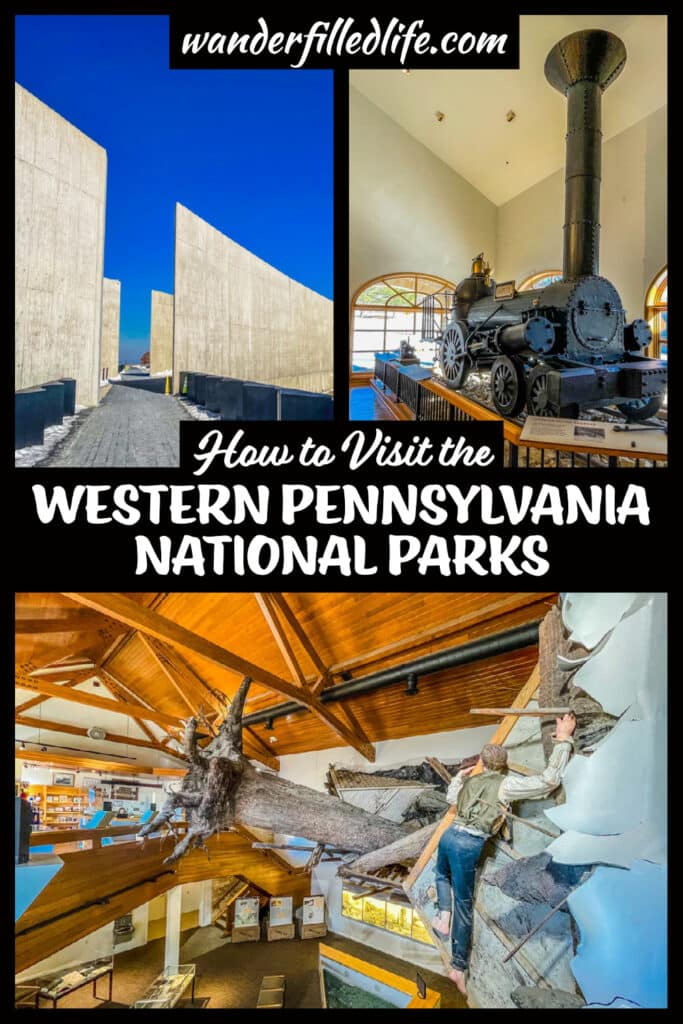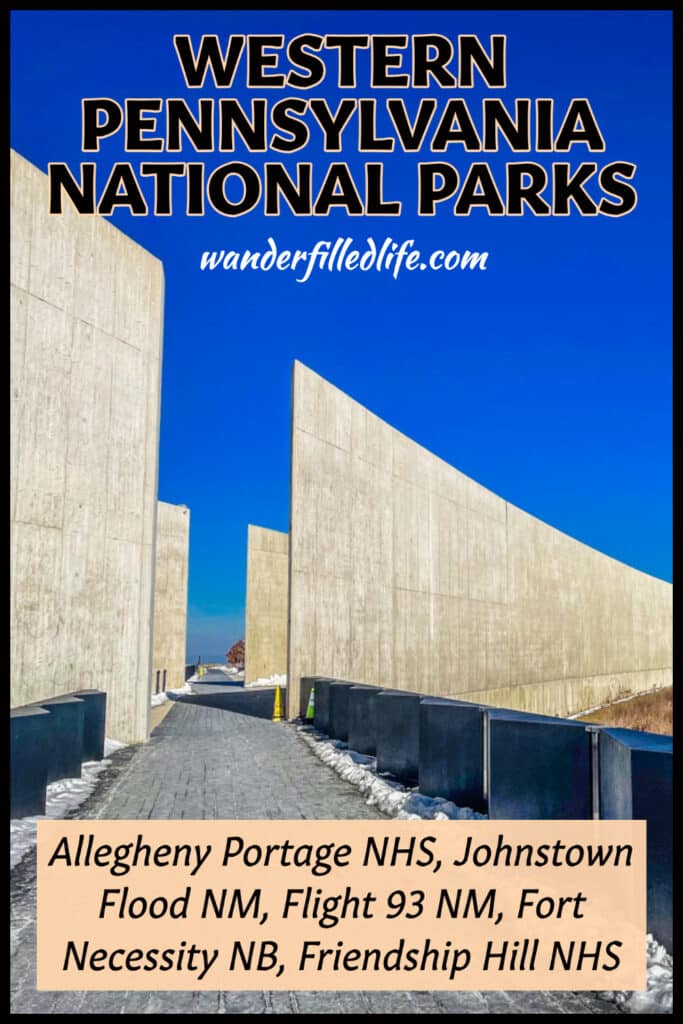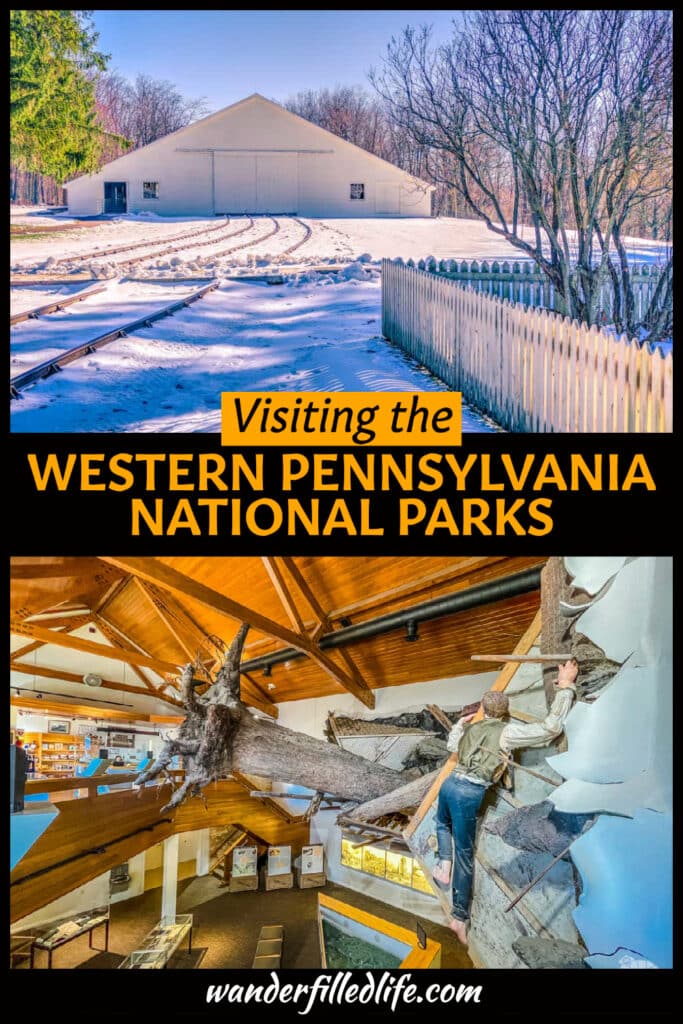Last Updated on September 5, 2023 by Grant
The Western Pennsylvania National Parks are historic treasures, exploring some of our nation’s most important, and tragic, moments. From the first battle of the French and Indian War to the Sept. 11 attacks, these five sites tell stories from our history you like didn’t (or won’t) learn in class.
Aside from the history, these sites are all located in the picturesque Allegheny Mountains. That makes just driving from one site to another an excellent experience.
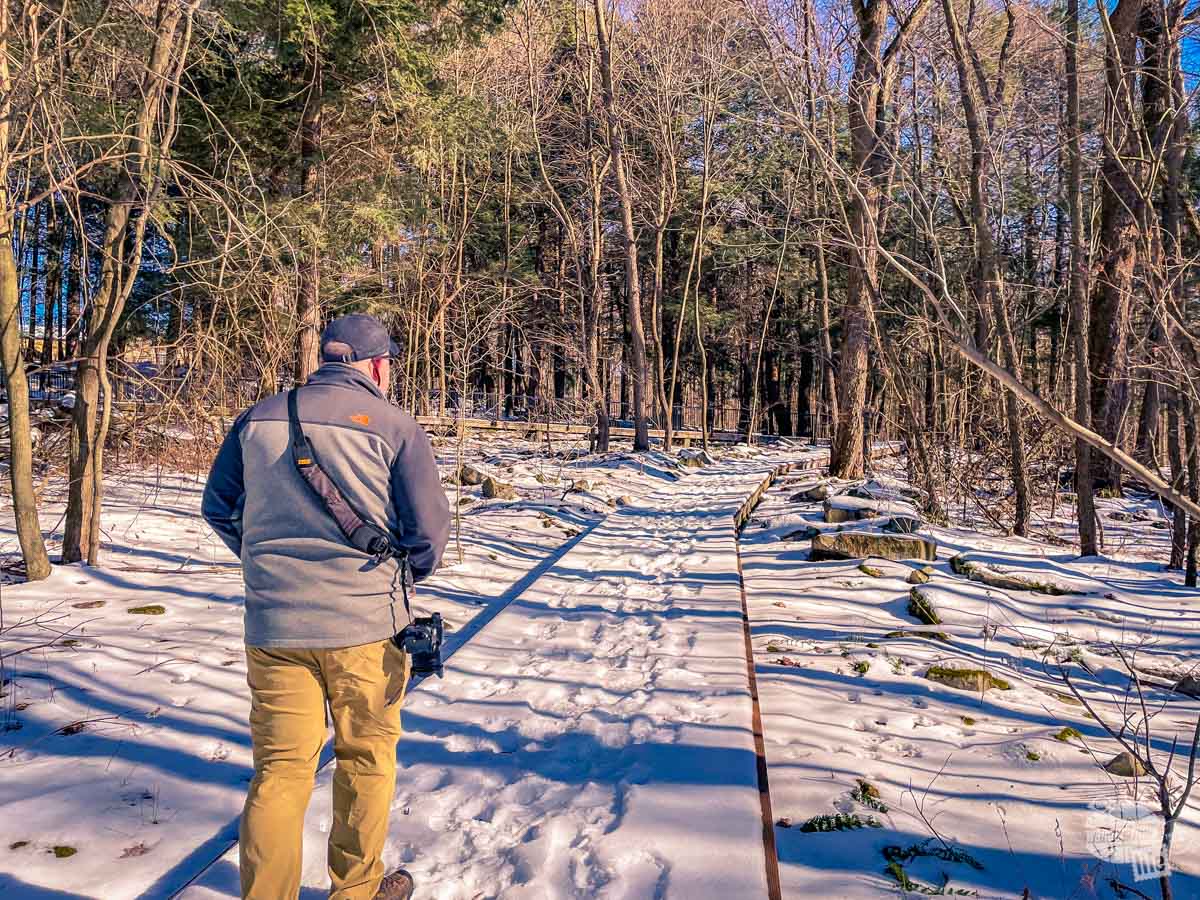
We spent our Thanksgiving Break enjoying the Western Pennsylvania National Parks sites and loved it. We had a great time exploring the area. The towns we stayed in were lovely. We felt it was a fantastic week-long trip.
(Disclaimer: When we link to places where you can buy our stuff or places we stayed, we are using special codes that earn us commissions on the sales at no additional cost to you. Please see our Review Policy for more information.)
Johnstown Area National Park Sites
We used Johnstown, PA as a home base for the first two sites we visited on this trip: Allegheny Portage Railroad National Historic Site and Johnstown Flood National Memorial.
Allegheny Portage Railroad National Historic Site
The first site we visited was Allegheny Portage Railroad National Historic Site. Located not too far from Johnstown, PA, this site tells a unique story of American ingenuity. In the early 1800s, canals were the main routes of transportation in the Northeast. These canals provided a method for goods and passengers to make their way across the country rather than on the primitive roads in the area.
At the time, Pennsylvania was losing commercial traffic to neighboring states which had more developed east-west canal systems. Government officials were intent on unlocking the potential of Western Pennsylvania and providing a route to the (then) western frontier. A canal was needed to take traffic from Philadelphia to what is now Pittsburg.
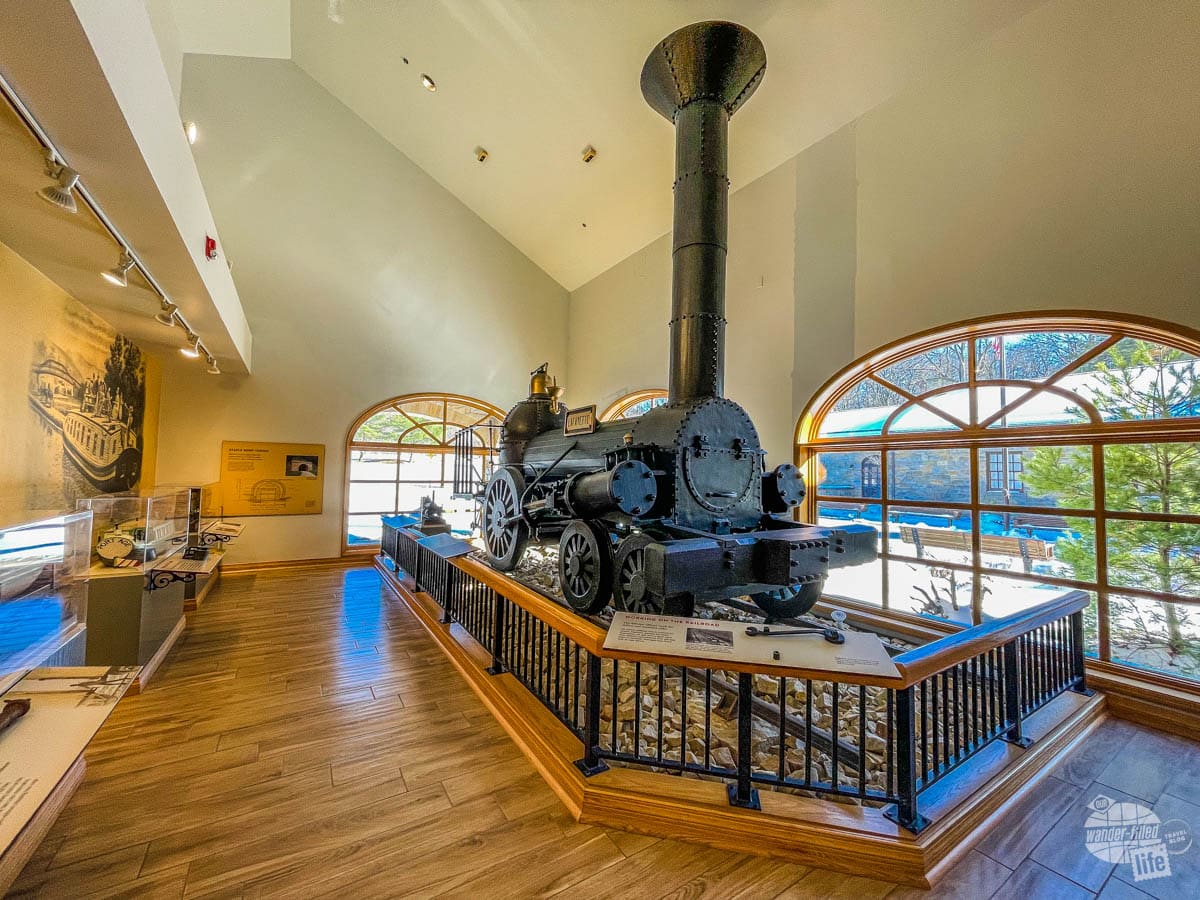
There was only one problem: the Allegheny Mountains. Boats don’t go over mountains. An engineer came up with a system to transport canal boats via a rail system. And then they came up with a pulley system to pull the boats up over the mountains and down to the other side.
While this system had its issues, it worked. It reduced the travel time from Philadelphia to the Pittsburg area from 23 days to just four days.
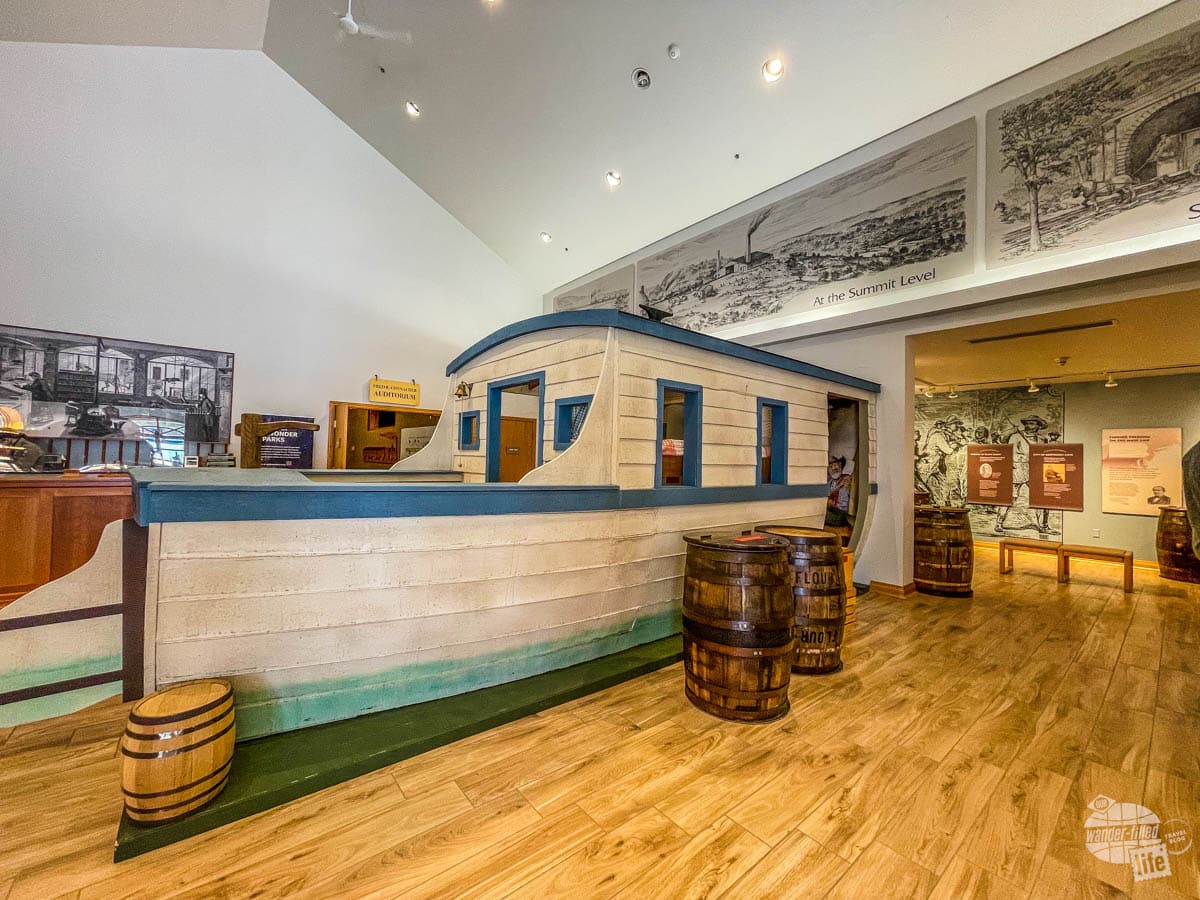
Visiting Allegheny Portage National Historic Site
As with most Park Sites, start your visit at the visitor center. The visitor center has an excellent video explaining how this system worked. It also explains why it was essential for growth in the western part of the state and what replaced it.
Once you have seen the video, be sure to check out the exhibits throughout the visitor center. The exhibits look at both the economic and cultural impact of the system. They also include its impact on the Underground Railroad for enslaved people escaping to the north.
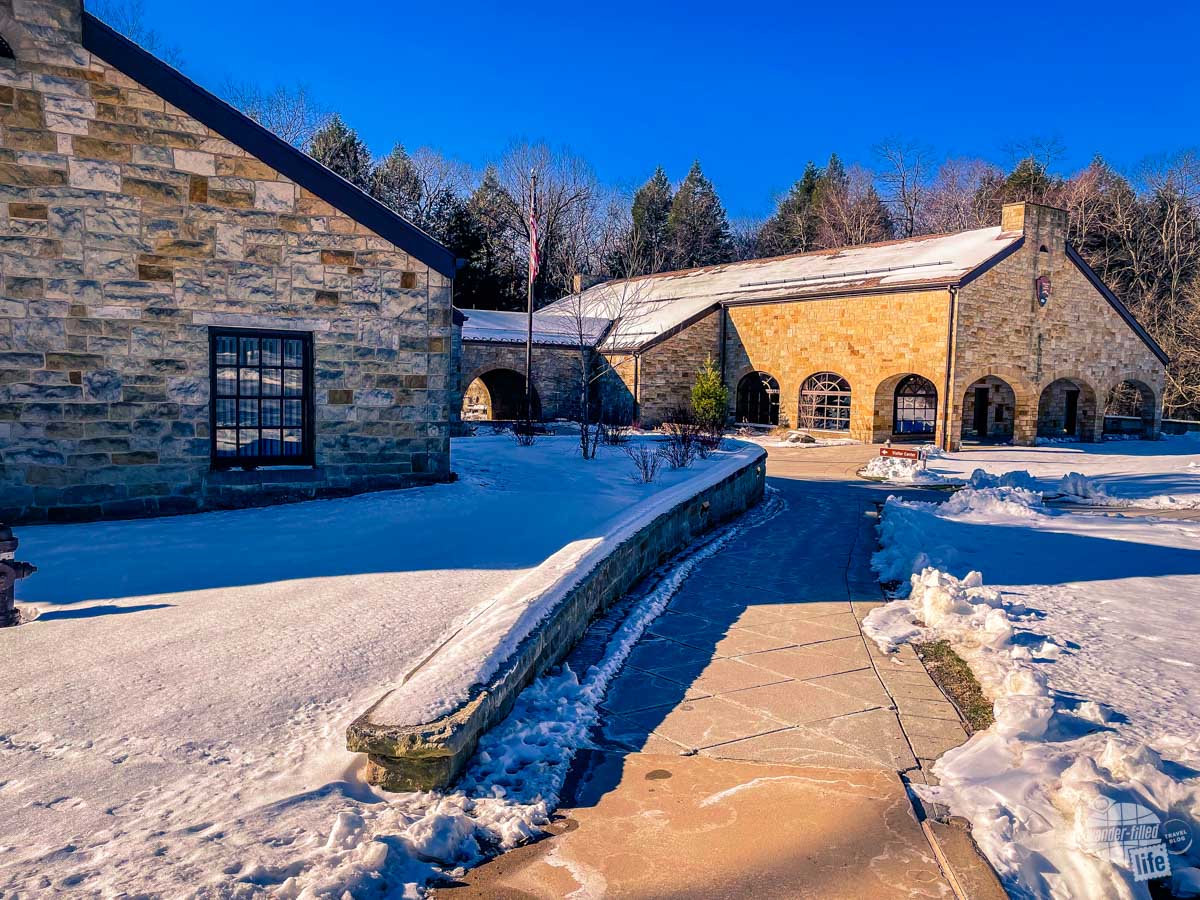
After that, follow the short trail down the hill to the reconstructed Engine House 6 Exhibit Building and the Lemon House.
The Engine House 6 Exhibit Building is a reconstructed demonstration of one of the engine and pulley systems. This complicated system used to pull and lower canal boats over the mountains. Inside the building, you will find a working model of how the system worked. You will also find exhibits on the construction and improvements of the system. One of the biggest improvements was replacing hemp rope with braided wire cable created by John Roebling, builder of the Brooklyn Bridge.
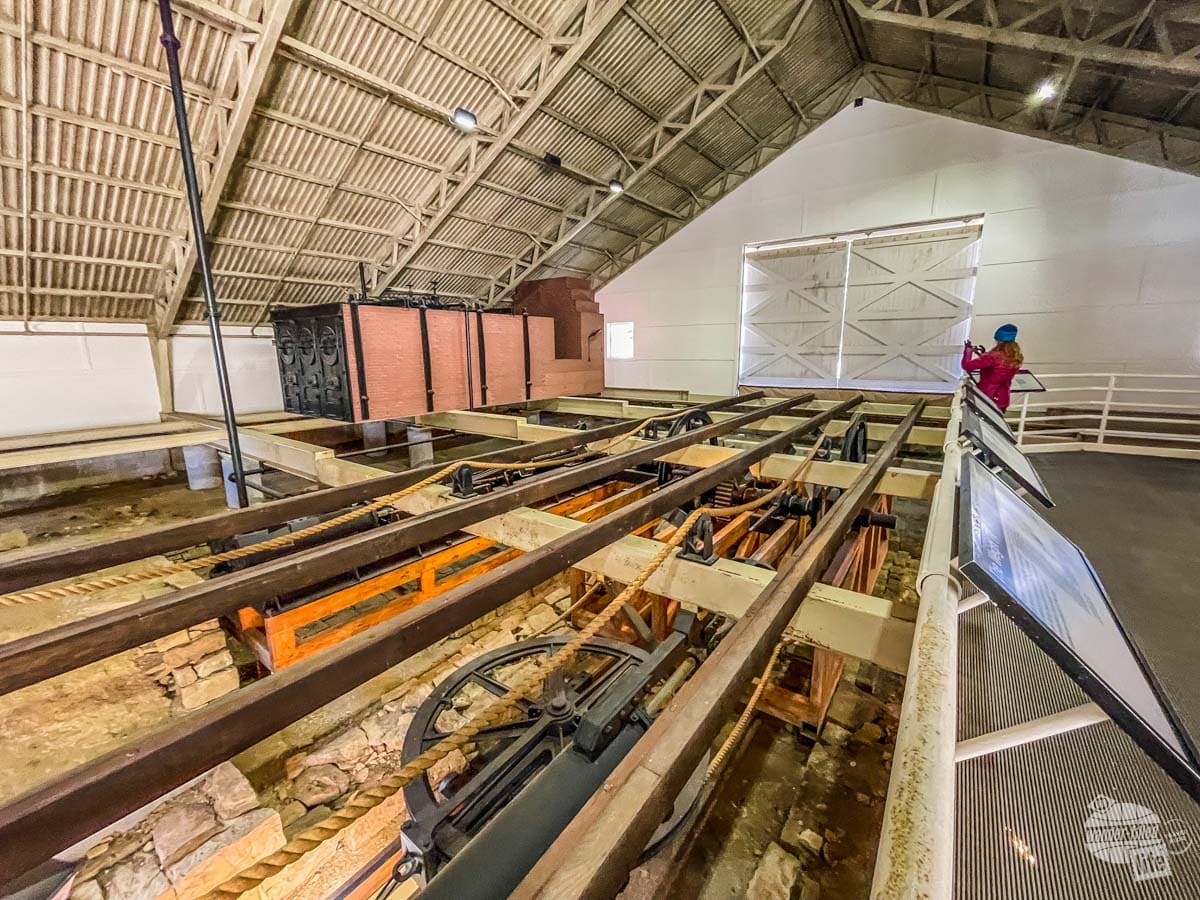
Across the way, you will find the Lemon House. Dating back to 1834, this served as a tavern for travelers on the rail system. The lower level of the house has been restored as best the historians for the Park Service could manage. The house is really cool and provides a good example of what an 1840s wayside tavern would have looked like.
In addition to these parts of the site, there are a couple of brief trails, including one to the Skew Arch Bridge. Since these trails were covered in snow, we opted to pass on them. You can also visit the Staple Bend Tunnel, the first railroad tunnel in the United States. This site is located closer to Johnstown and is at the end of a two-mile trail. Again, due to snow, we opted to skip this part of the park on this visit.
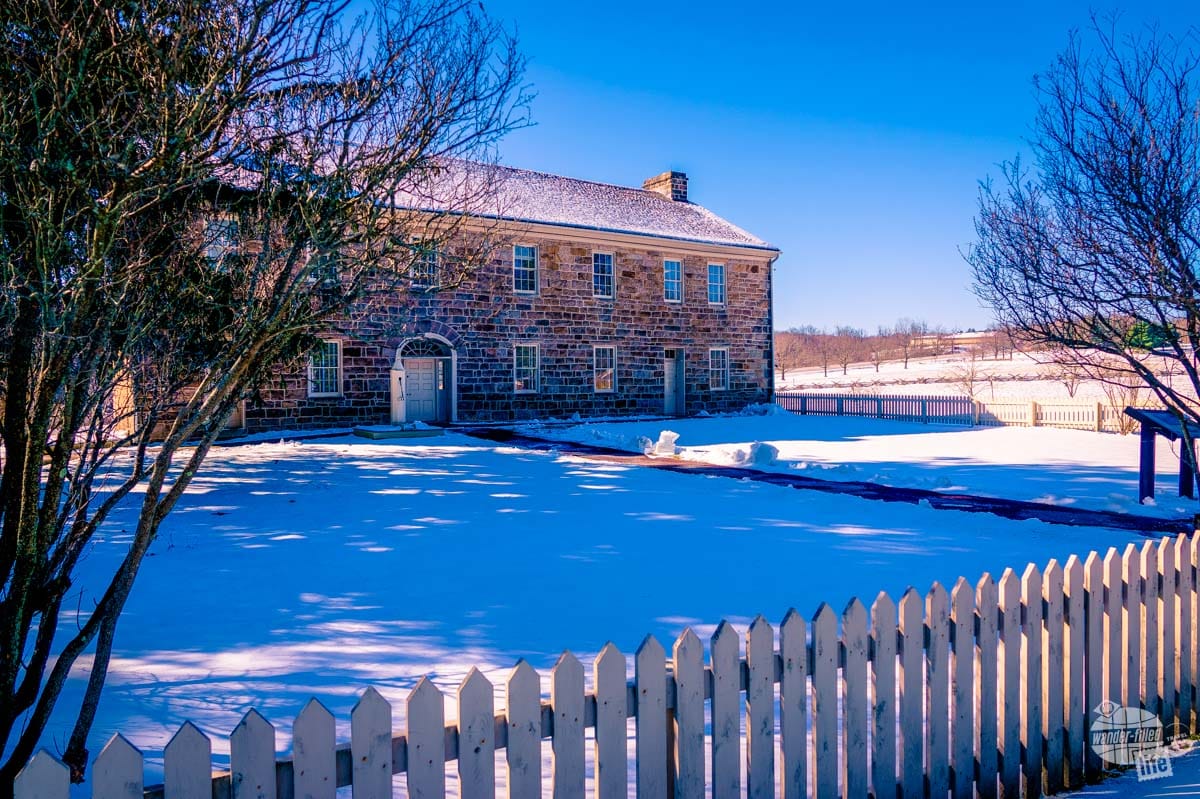
If you are planning on just visiting the Engine House and not doing any of the trails or going to the Staple Bend Tunnel, you can easily visit this site in an hour or two. If you are planning on doing more, I would give yourself at least a half-day to see it all. This is a great site for anyone in love with trains, much like Steamtown National Historic Site in Eastern Pennsylvania.
Click here to read more about Steamtown National Historic Site.
Johnstown Flood National Memorial
Located just north of Johnstown, the Johnstown Flood National Memorial memorializes one of the worst disasters in American history: the Johnstown Flood.
After days of rain, the South Fork Dam gave way, sending 20 million tons of water through the narrow Little Conemaugh River Valley. The rush of water slammed into Johnstown, an industrial hub and home to thousands. At times, the wall of water exceeded 70 feet tall. It literally washed away most of the structures in the town.
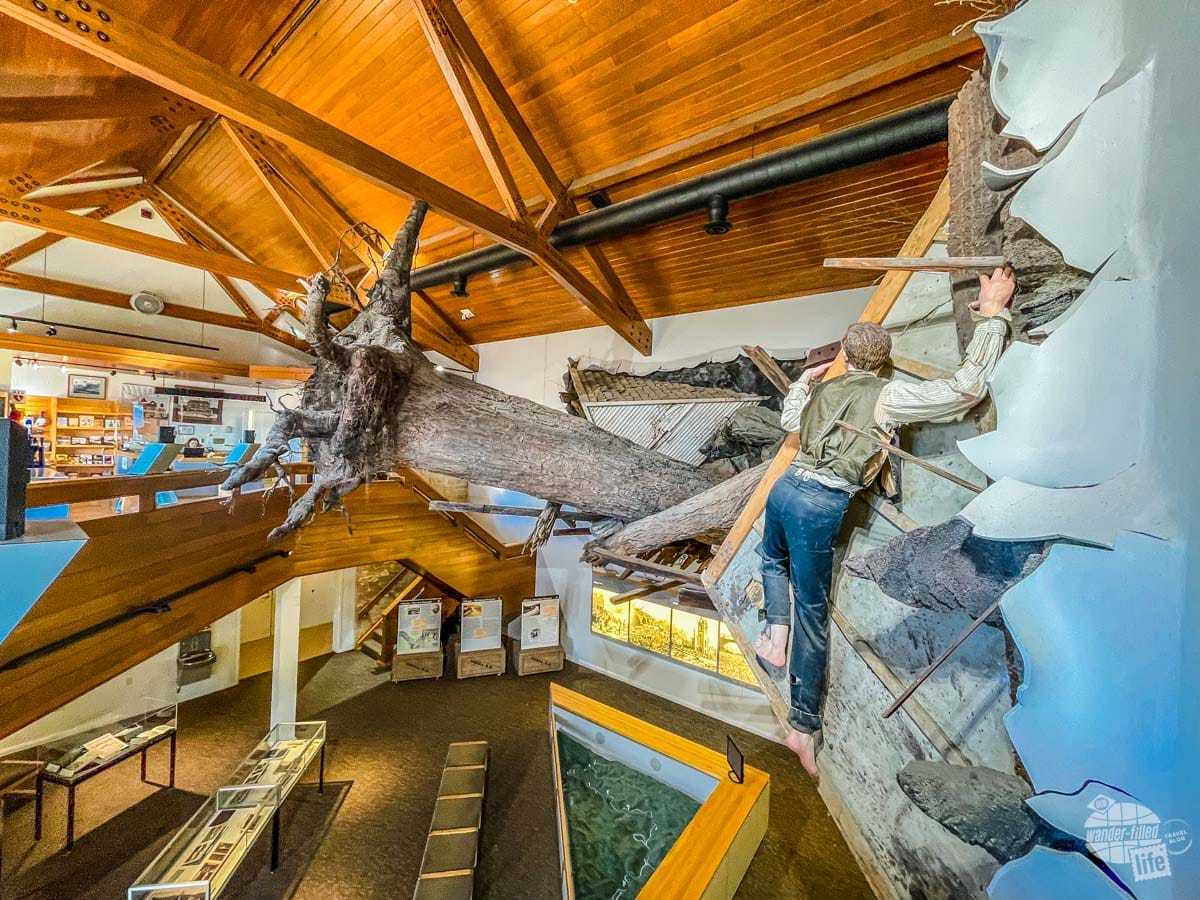
The dam was owned by the South Fork Hunting and Fishing Club. The dam failed due to changes to its structure and safety systems, as well as outright neglect by its owners. The club was a mountain escape for the very wealthy of Pittsburg society. Following the flood, the club was not held liable to the collapse legally. The flood cost 2,209 people their lives, wiping out entire families.
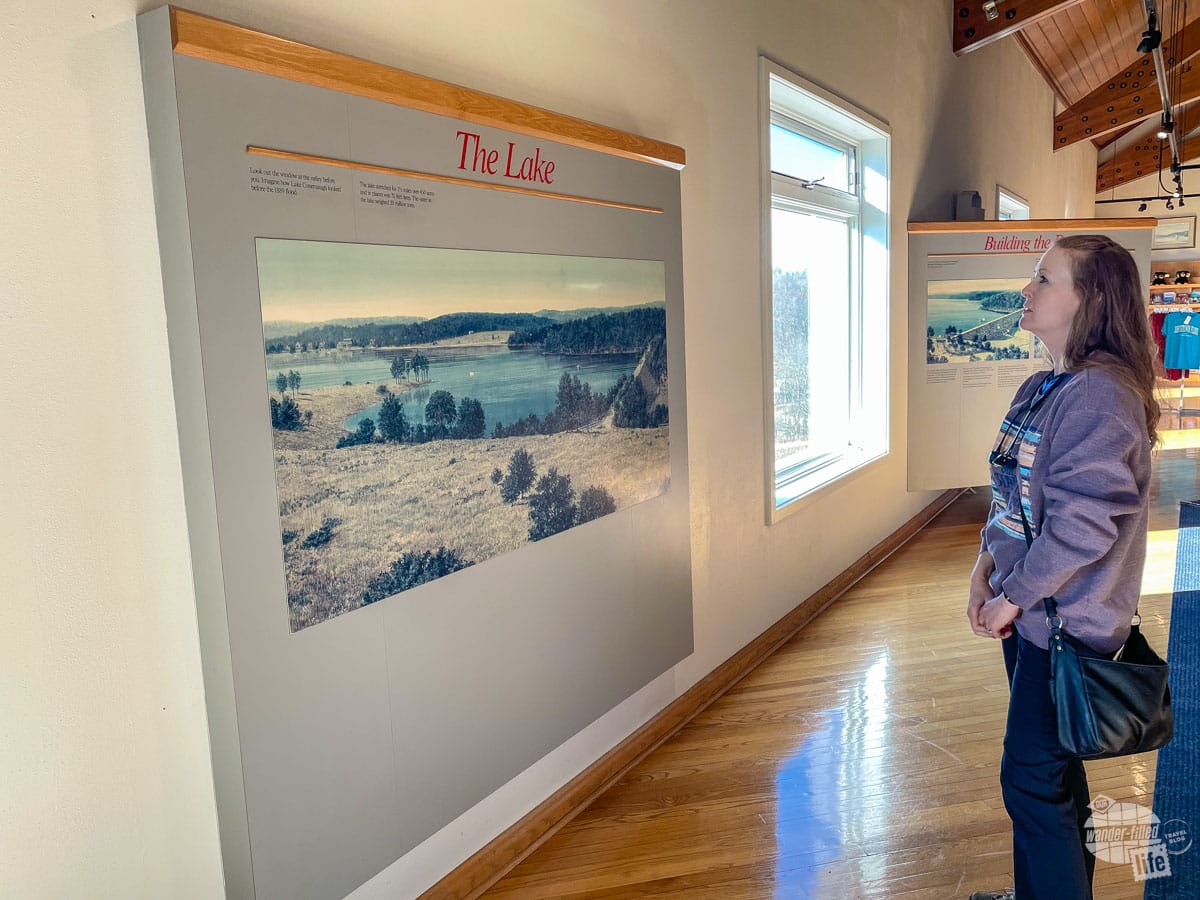
Visiting Johnstown Flood National Memorial
First, make sure you put in directions to the visitor center itself… There are a couple of different parts of the memorial and GPS directions can be a bit off.
Start at the Visitor Center to learn about the events leading up to the flood. Be sure to check out the excellent exhibits on what it was like to survive the flood. The exhibits include an audio interview with one of the survivors.
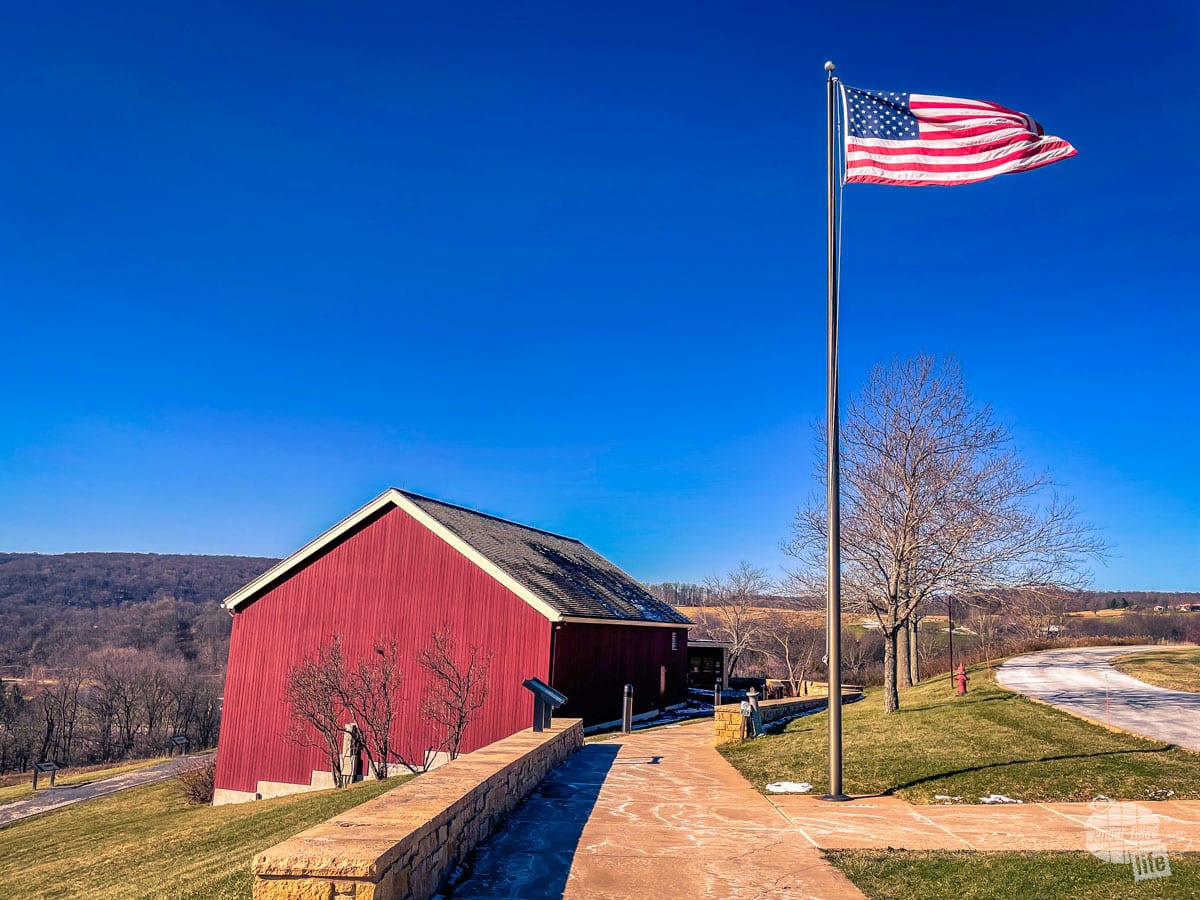
Then sit down to watch the film. The film is quite poignant and drives home the terror of what happened. While I had read about the Johnstown Flood briefly in history class in high school, I learned so much about the events leading to this tragedy during the film and from the exhibits.
Once you are done with the exhibits, drive down the road to the parking area. From there, you can walk out to an observation deck over the remnants of the ruptured dam. Today, a rail line runs through the valley where once there was a lake. It passes right through the gap in the dam. Still, you can see the spillway and get an idea of how much water went cascading down this narrow valley.
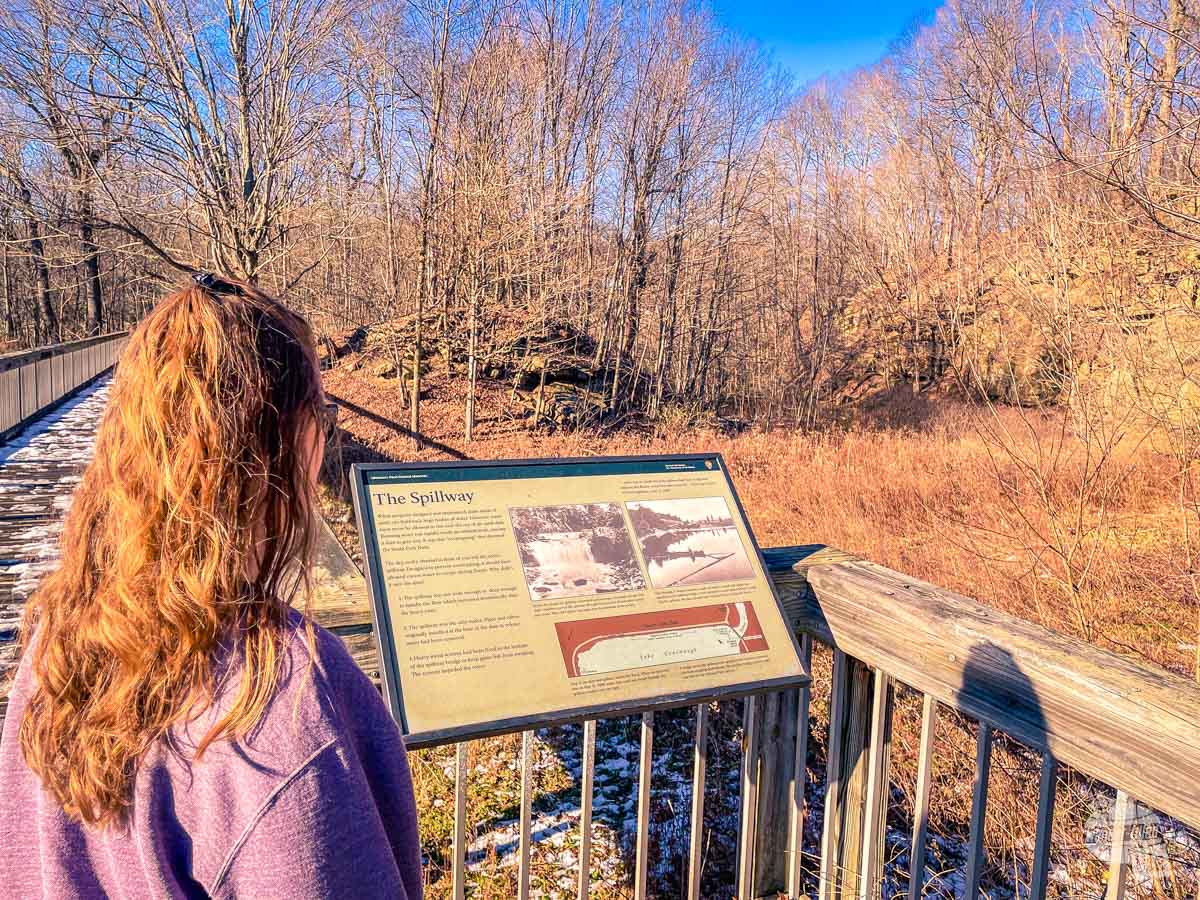
After that, as you head towards Johnstown, turn up one of the side roads to see the other part of the memorial where you can find the South Fork Hunting and Fishing Club’s clubhouse and one of its preserved cottages.
While the video and exhibits take a while, there is not a ton else to do at this site. I would give yourself about an hour or two to see it all.
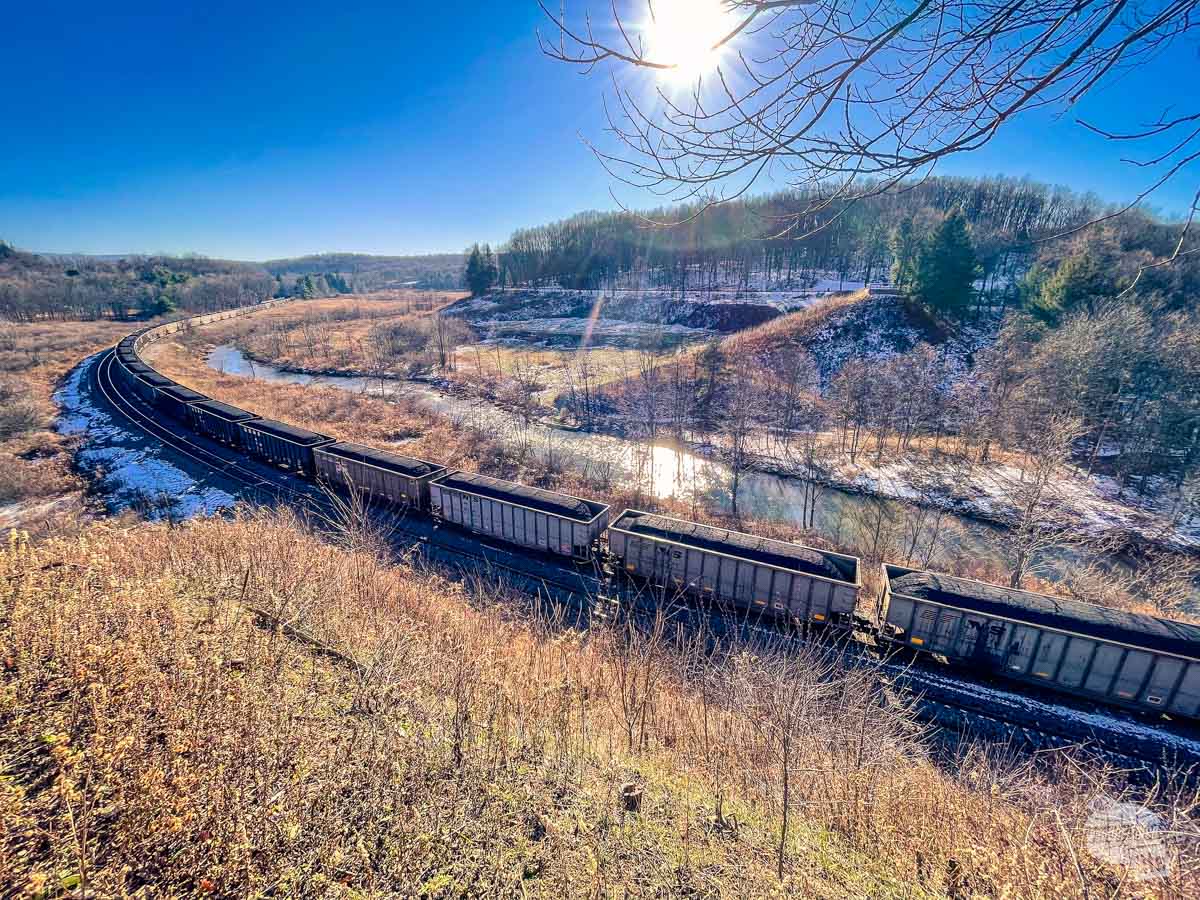
Where to Stay and Eat in Johnstown
We stayed at the quite comfy Hampton Inn in Johnstown. We found this hotel, located outside the main part of the city, perfect for our needs for a couple of nights. The staff was friendly and helpful.
Read TripAdvisor Reviews | Book the Hotel
For dinner, we found the Phoenix Tavern in Johnstown to be perfect for a drink and a bite to eat. This local bar had excellent food, including a unique take on chili we had never heard of.
Bonnie had their Cambria City Chili, which was a beef chili with beans, onions, cheese and elbow macaroni. It was interesting and hit the spot on a cold day. I had one of their excellent turkey pastrami melts, which likewise hit the spot.

Western Pennsylvania National Parks On the Way to Uniontown
After spending a couple of nights in Johnstown, we moved on to Uniontown, PA to see two more sites. Along the way, we cut southeast to go to the Flight 93 National Memorial. We made a point to take the backroads from Johnstown and really enjoyed the rural areas in the Alleghenies we saw.
Flight 93 National Memorial
The Flight 93 National Memorial honors the 40 men and women aboard United Airlines Flight 93 whose action forced the crash of the fourth hijacked plane during the Sept. 11, 2001 attacks. That morning, four terrorists hijacked the plane and turned it around intent on targeting Washington, DC, likely either the Capitol building or the White House.
In the midst of the flight, once the passengers realized what had happened to the other three planes, they attempted to regain control of the aircraft. The terrorists crashed the plane in an empty field rather than let the passengers regain control.
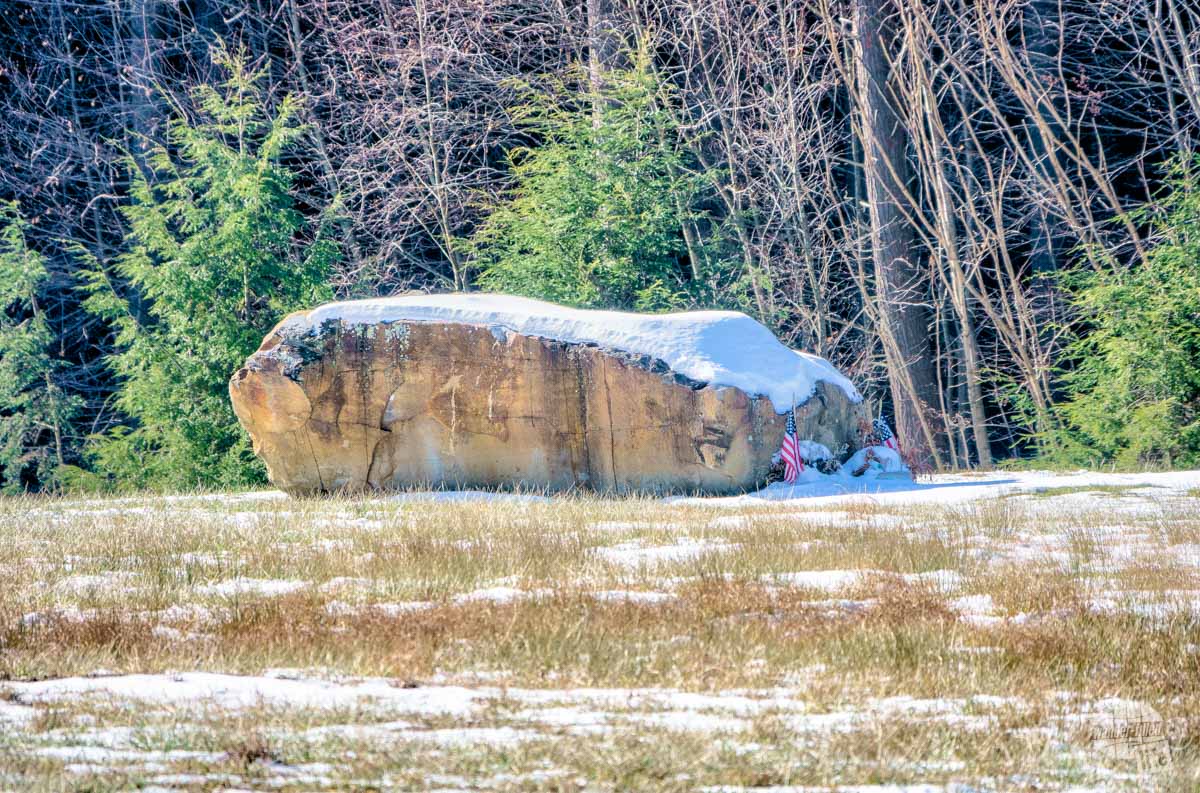
What made Flight 93 so significant in terms of the investigation into who performed these attacks was the remains of the aircraft were not buried under rubble from buildings. Investigators were able to sift through the debris and find financial information on the hijackers, allowing them to trace the money back to al-Qaeda.
Visiting Flight 93 National Memorial
We have been to the 9/11 Memorial and Museum at the World Trade Center and the Pentagon Memorial. This site is every bit as somber and gut-wrenching as the other sites.
As you drive into the memorial, the first thing you will see is the Tower of Voices. Feel free to stop here before you go to the visitor center if you want.
The Tower of Voices
The Tower of Voices is a 93-foot monument to the crew and passengers who perished during the hijacking. It is a unique monument, intended to be a large musical instrument.
The tower has 40 wind chimes which, when the wind blows hard enough, produce different tones for each person lost. These tones are designed to provide both consonance and dissonance at the same time, symbolic of the individuals on the flight coming together and the horror of that day.
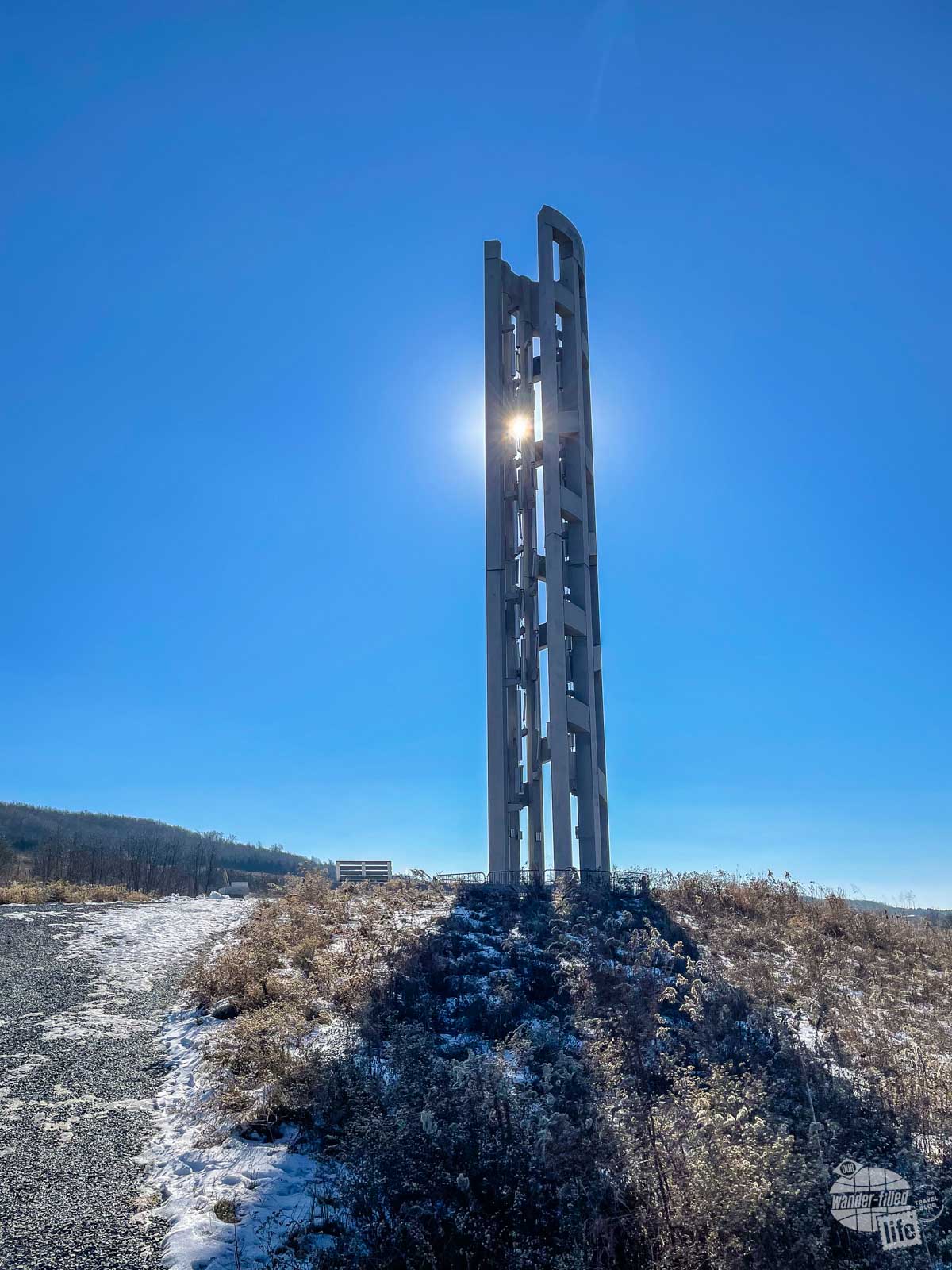
This is a really impressive monument to see in person and I highly recommend stopping there for a few minutes. You can do it either on the way in or way out.
The Visitor Center
Afterward, head to the visitor center. As you walk down the sidewalk from the parking lot towards the visitor center, pay close attention to the paved path. It follows the track of Flight 93. Take a moment and keep walking past the visitor center to the Flight Path Overlook, which lines everything up to the point of impact.
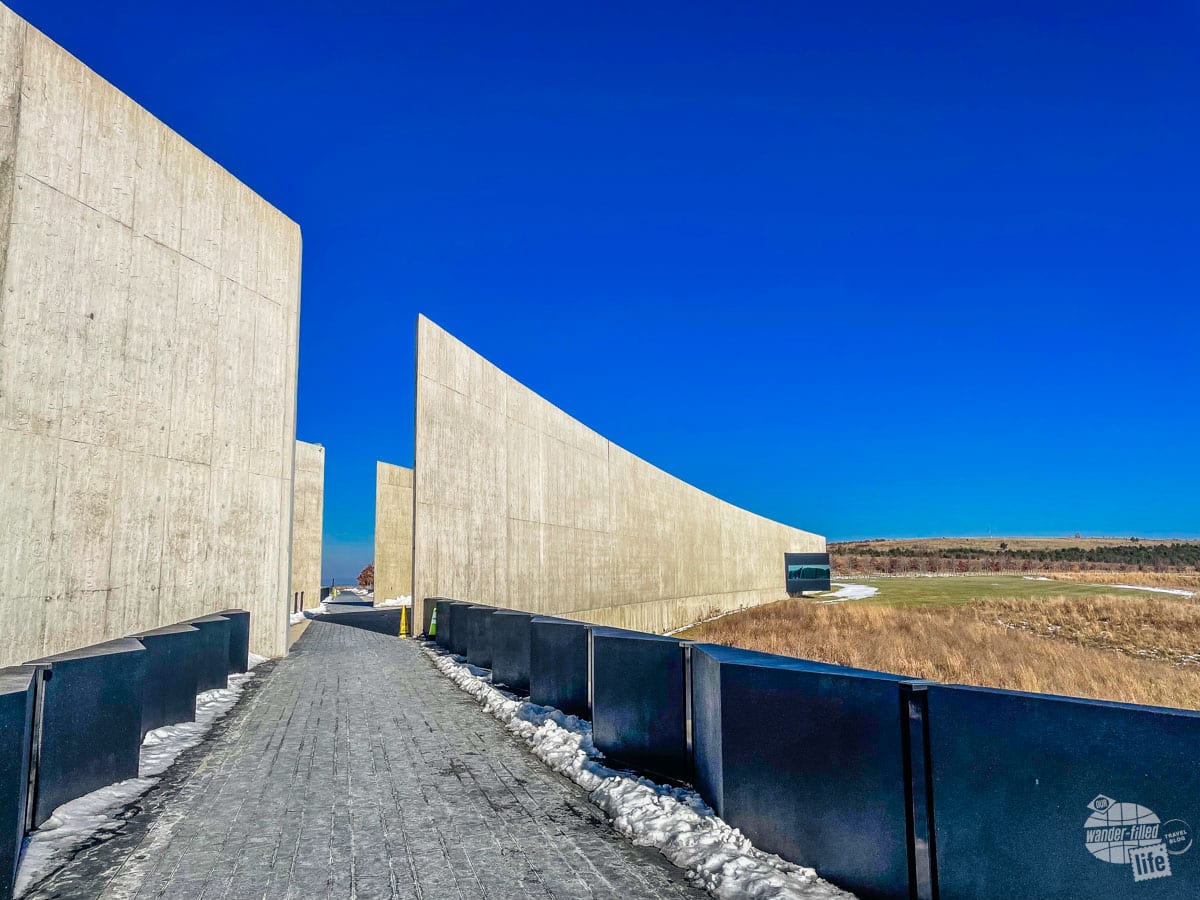
After taking a moment there, walk back to the visitor center and head in. Inside, you will find exhibits that tell the story of that fateful day. In particular, listening to the voicemails left by the crew and passengers on loved ones’ answering machines was emotional. But, for me, the most important part of the exhibit was the investigation. I learned a lot of details about how important this site was in the investigation into the 9/11 attacks.
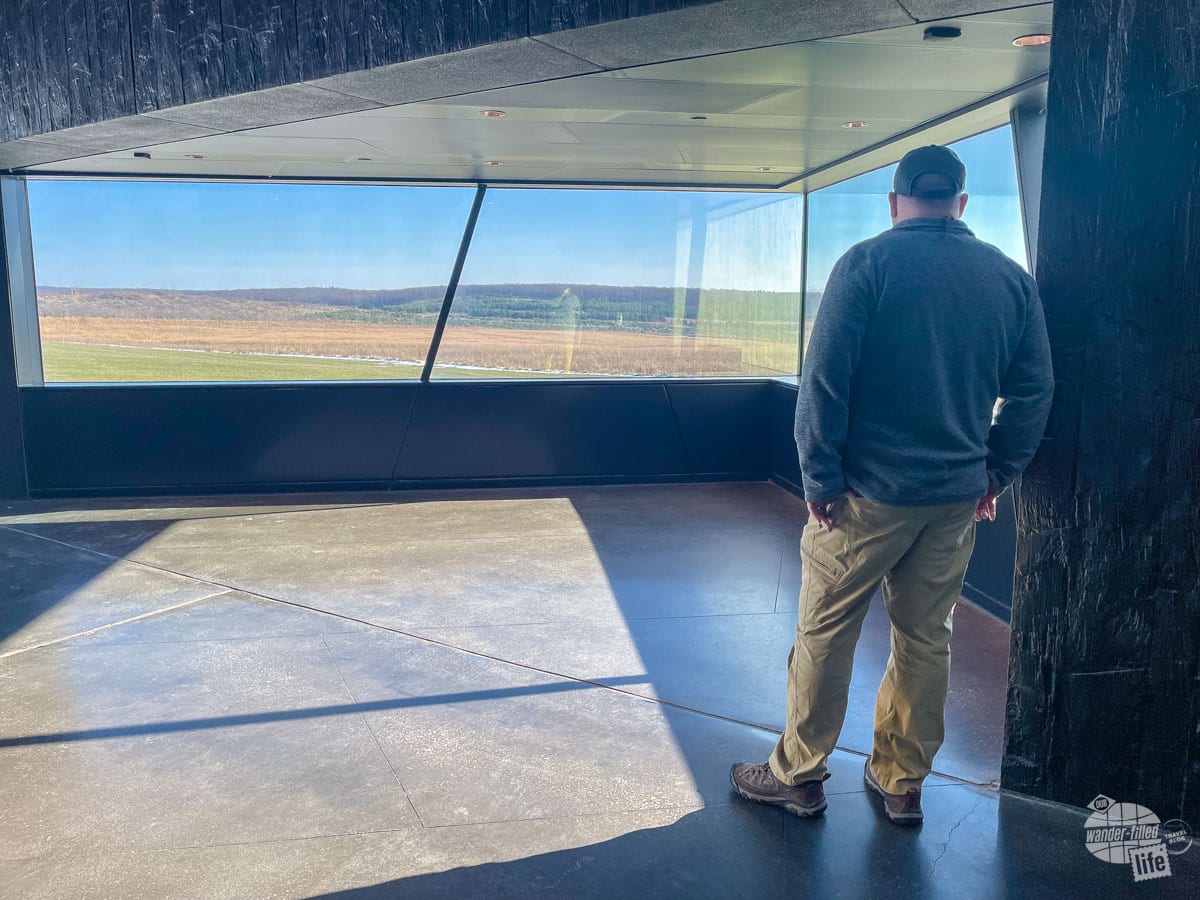
The Memorial Plaza
After the visitor center, you have a choice on how to get to the Memorial Plaza. You can take the Allee, a circular walk with a gradual descent with 40 memorial groves of trees planted along the way and return via the Western Overlook Trail (about 2 miles roundtrip). Alternatively, you can drive down to the parking lot by the shelter.
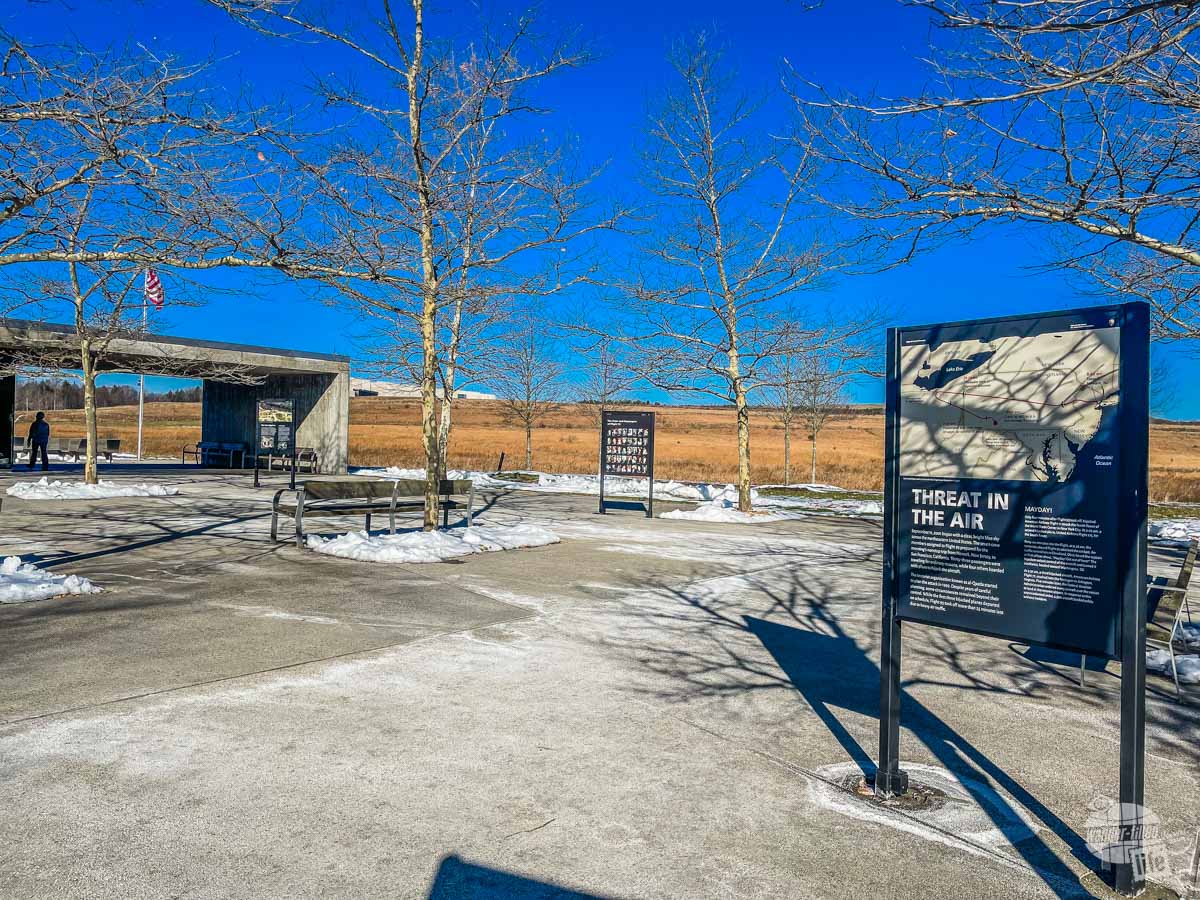
The Memorial Plaza has some informational exhibits but nothing you wouldn’t have read in the visitor center. As you walk down the paved path to the Wall of Names, on the right is where the debris field is. In the midst of the debris field, you will spot a boulder marking the impact site.
The Wall of Names memorializes all 40 victims and lines up again with the path of Flight 93. It is a powerful reminder of those who lost their lives.
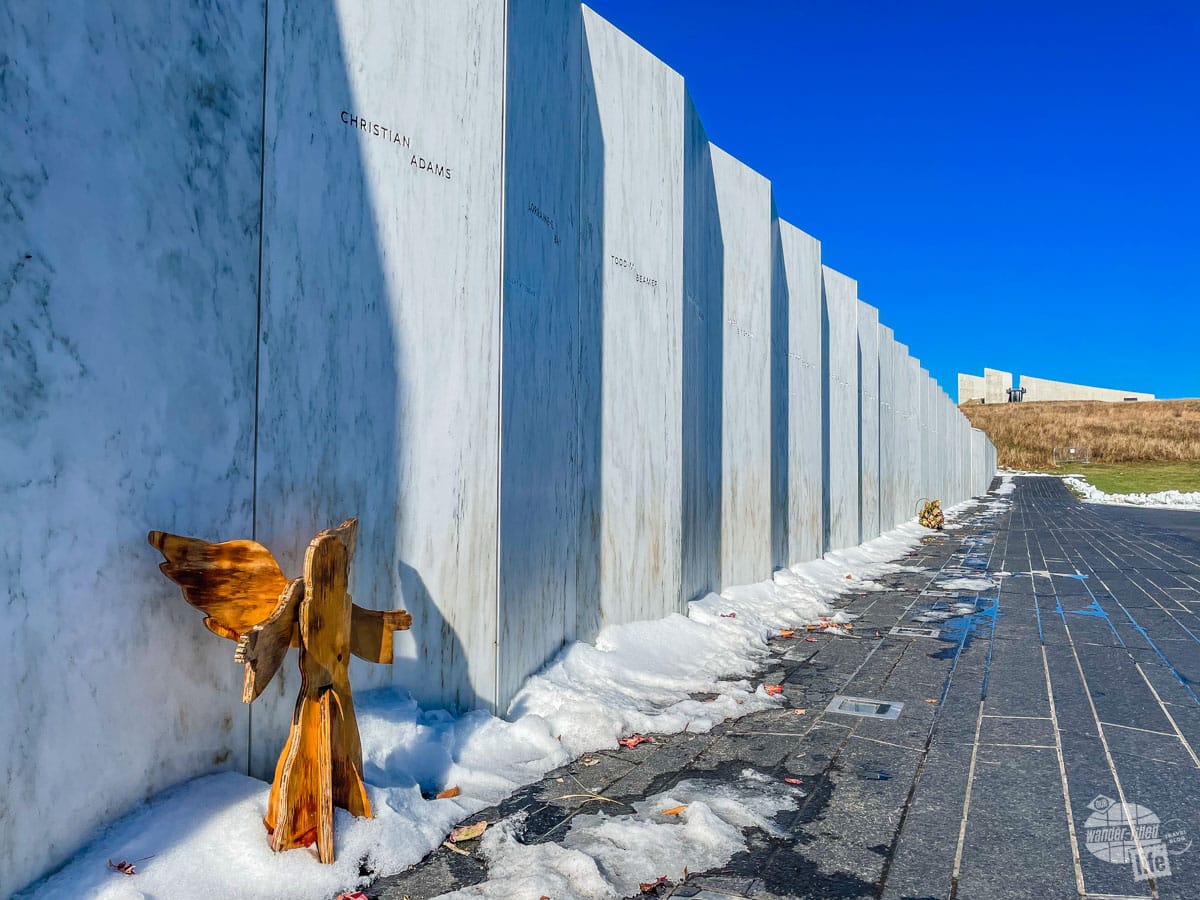
It truly is a profoundly powerful place to visit and well worth your time, even if you have been to the site at the World Trade Center. All told, plan on spending a couple of hours here, more if you plan on walking down to Memorial Plaza.
Uniontown Area National Park Sites
After leaving Flight 93 National Memorial, we made our way to the Uniontown area, stopping at Fort Necessity National Battlefield first before heading into Uniontown for our hotel. Like the drive to Flight 93 from Johnstown, we really enjoyed driving the rural roads through the Allegheny Mountains of Southwest Pennsylvania.
Fort Necessity National Battlefield
In 1754, George Washington, then a young officer in the British Army, was sent into the wilderness of Western Pennsylvania with a regiment of Virginia soldiers. While on the frontier, he learned of a French camp nearby. He took 40 soldiers to the camp to determine the intentions of the French. Someone, no one knows who, fired the first shot. The resulting skirmish left 13 Frenchmen dead and 21 captured. Among the dead was the brother of the nearby French force Commander.
Washington moved back to Great Meadows, where he had his soldiers build Fort Necessity. The fort itself was a small wooden fence with a cabin inside, surrounded by a trench for the soldiers to fight from.
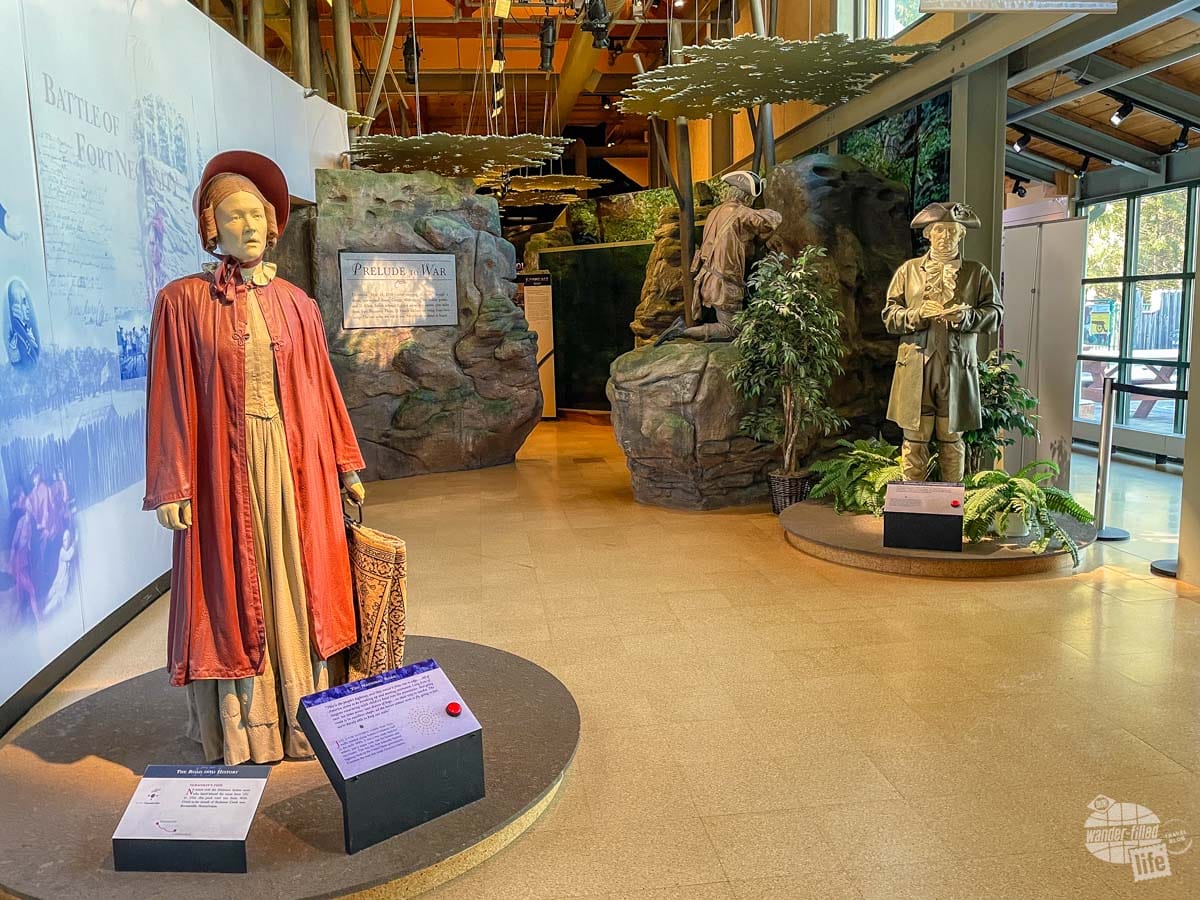
The French moved in and fought from the wood line, making excellent use of cover and slightly higher ground to force Washington to surrender after one day’s bitter fighting.
This started the French and Indian War, which in turn spread, becoming the Seven Years War, which was truly the first global conflict, since battles in this war spanned the Americas, Asia and Europe.
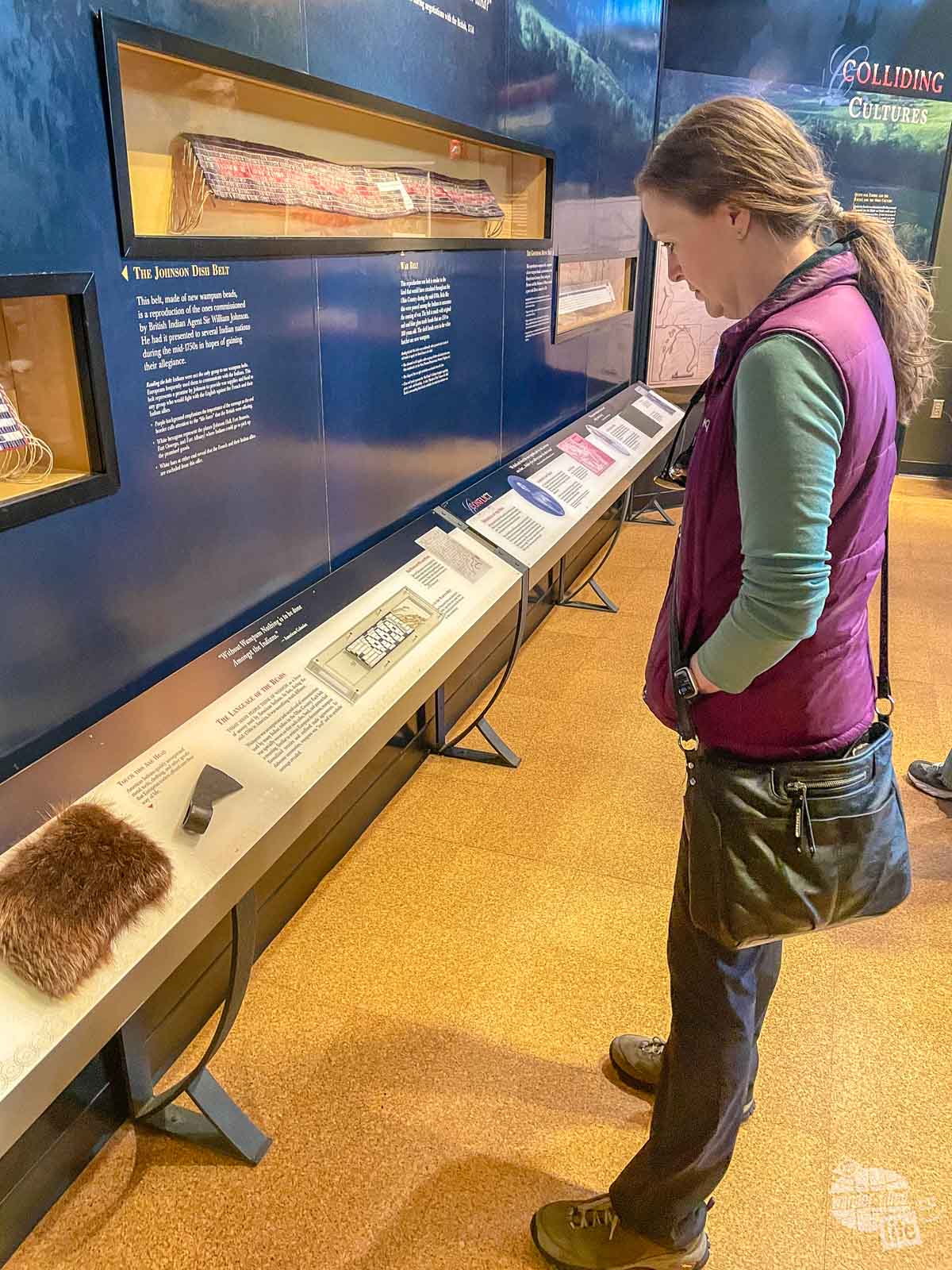
Visiting Fort Necessity National Battlefield
Start your visit at the Visitor Center and check out the excellent film, which explains the events leading up to the battle, gives an excellent depiction of the battle itself, as well as the impact of these events on the war, including Washington’s return to the area later in the war.
As you continue through the exhibits, you will see various artifacts from the war and the area around the battlefield, as well as exhibits on the creation of the National Road, the first Federally-funded highway to make travel to what was then the western frontier easier.
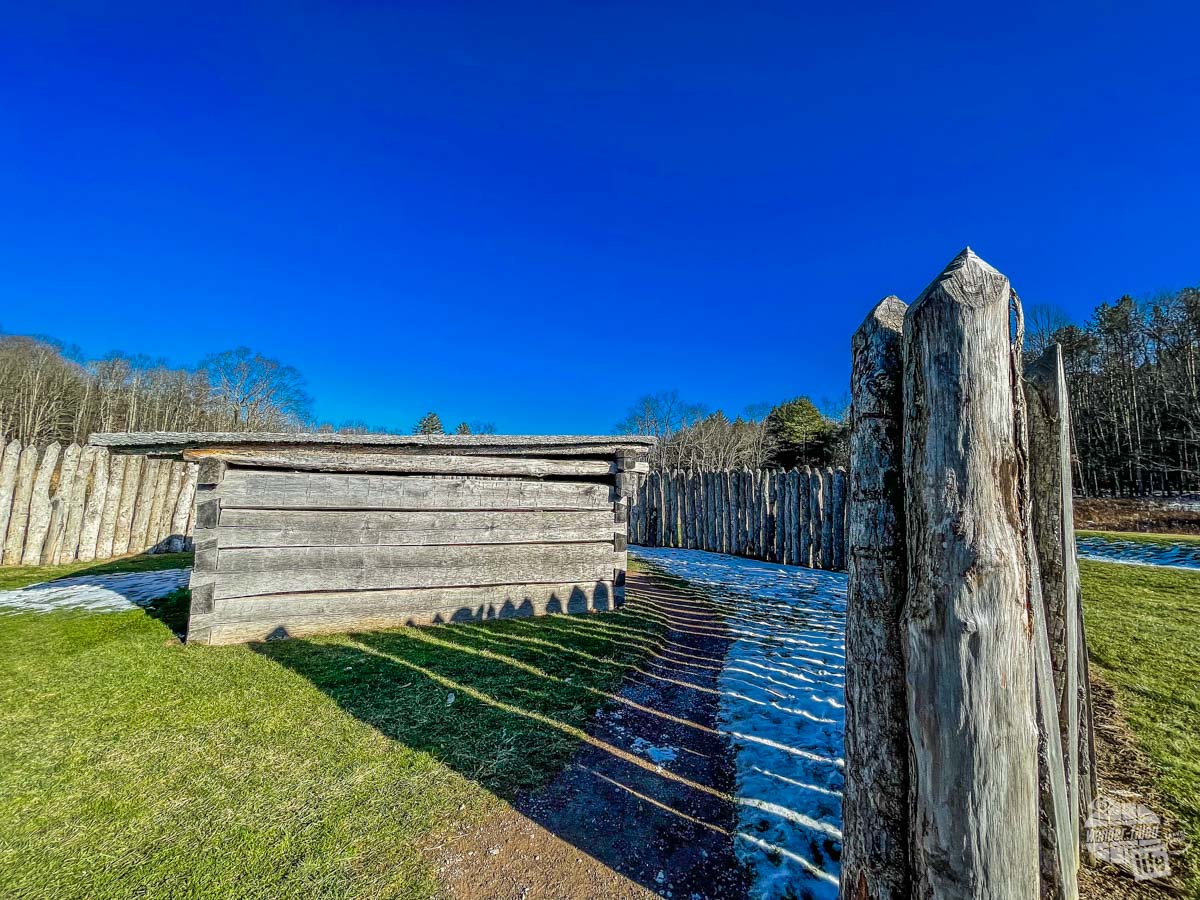
Once you are done with the exhibits, walk outside and follow the brief path to Fort Necessity. The fort is rather small and you can quickly see why it was overwhelmed by French fire. While this battle was a defeat for Washington, you can see the lessons the very young officer learned both here and when he returned under General Braddock later in the war.
Additionally, the park preserves the Mount Washington Tavern, which was a stage stop for travelers on the National Road. It was closed when we visited but it houses exhibits on life along this vital travel route.
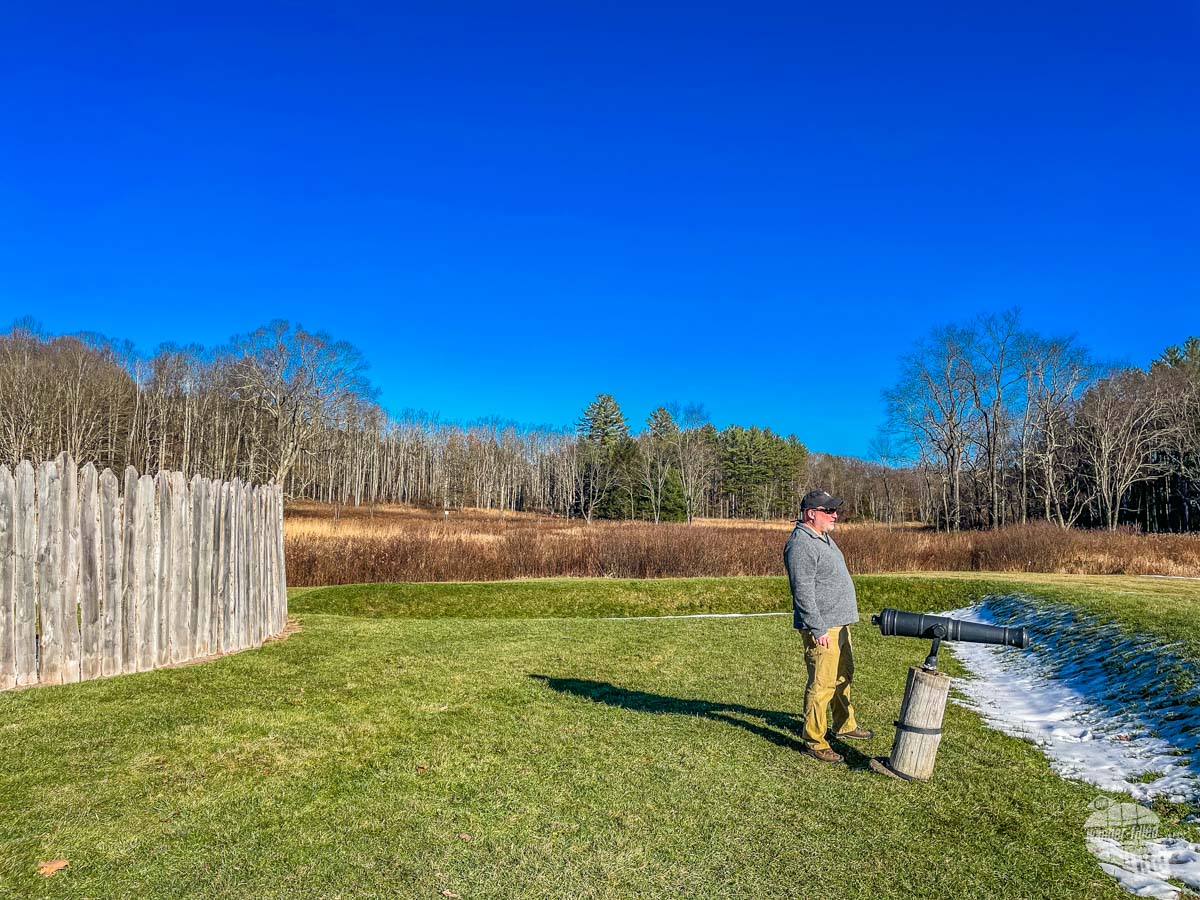
You can also visit the other two small units of the park, the Braddock Grave and the Jumonville Glen. The former tells the tale of the Braddock Campaign and his death and the latter is where the skirmish with the French forces happened, leading up to Fort Necessity. There are also some hiking trails at the main unit.
I really enjoyed my visit here. I knew of the battle from history class but what I learned was woefully inadequate compared to actually seeing the battlefield. All told, I would plan on spending two to three hours, more if you plan on hiking the trails here.
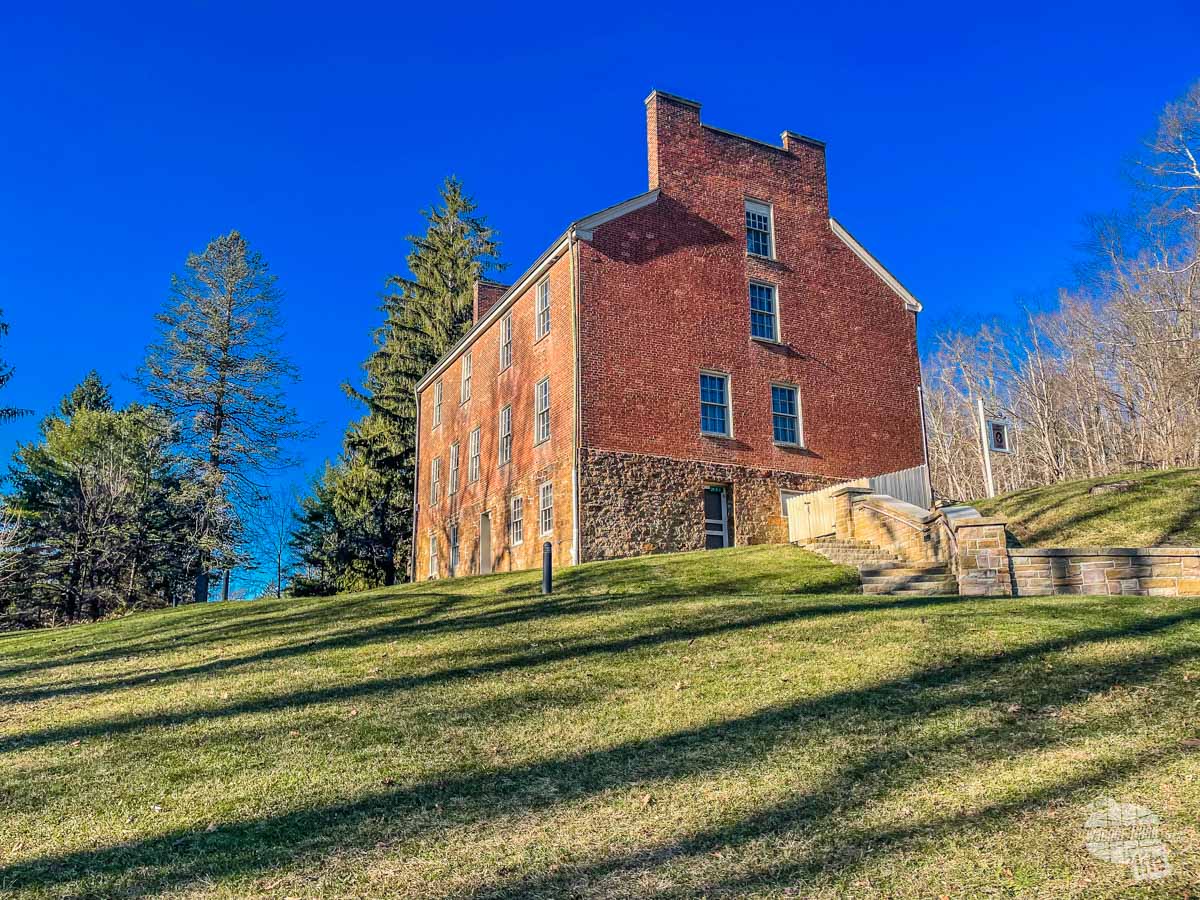
Friendship Hill National Historic Site
Of all the Western Pennsylvania National Parks, this one is probably the most obscure. Friendship Hill National Historic Site preserves the home of Albert Gallatin, one of the nation’s first and fundamental secretaries of the Treasury.
Gallatin, a Swiss immigrant, was not only Secretary of Treasury under Madison and Monroe, he was also a congressman and senator from Pennsylvania, as well as a diplomat who negotiated the Treaty of Ghent, which ended the War of 1812.
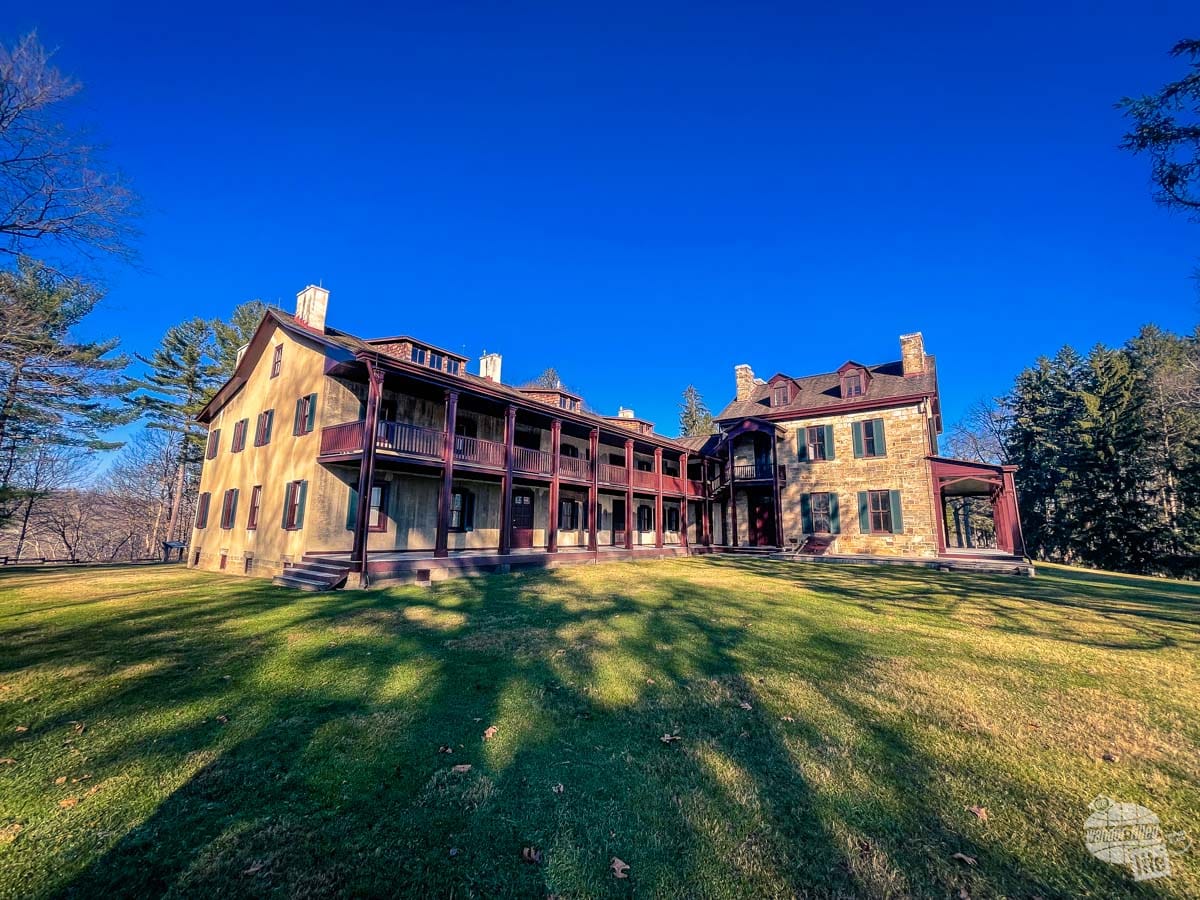
A Secretary of the Treasury, Gallatin reduced the Federal debt and funded both the Louisiana Purchase and the Lewis and Clark Expedition. He was also instrumental in helping create the National Road, which passed not far from his home at Friendship Hill.
Gallatin bought the land and developed Friendship Hill with the idea of turning it into a country estate. The land, at the time, was remote and on the western frontier of the country. But Gallatin was a busy man and actually spent very little time at this estate. When he did, his second wife, who was of a wealthy New York family, detested living in the country, clamoring for a return to the city.
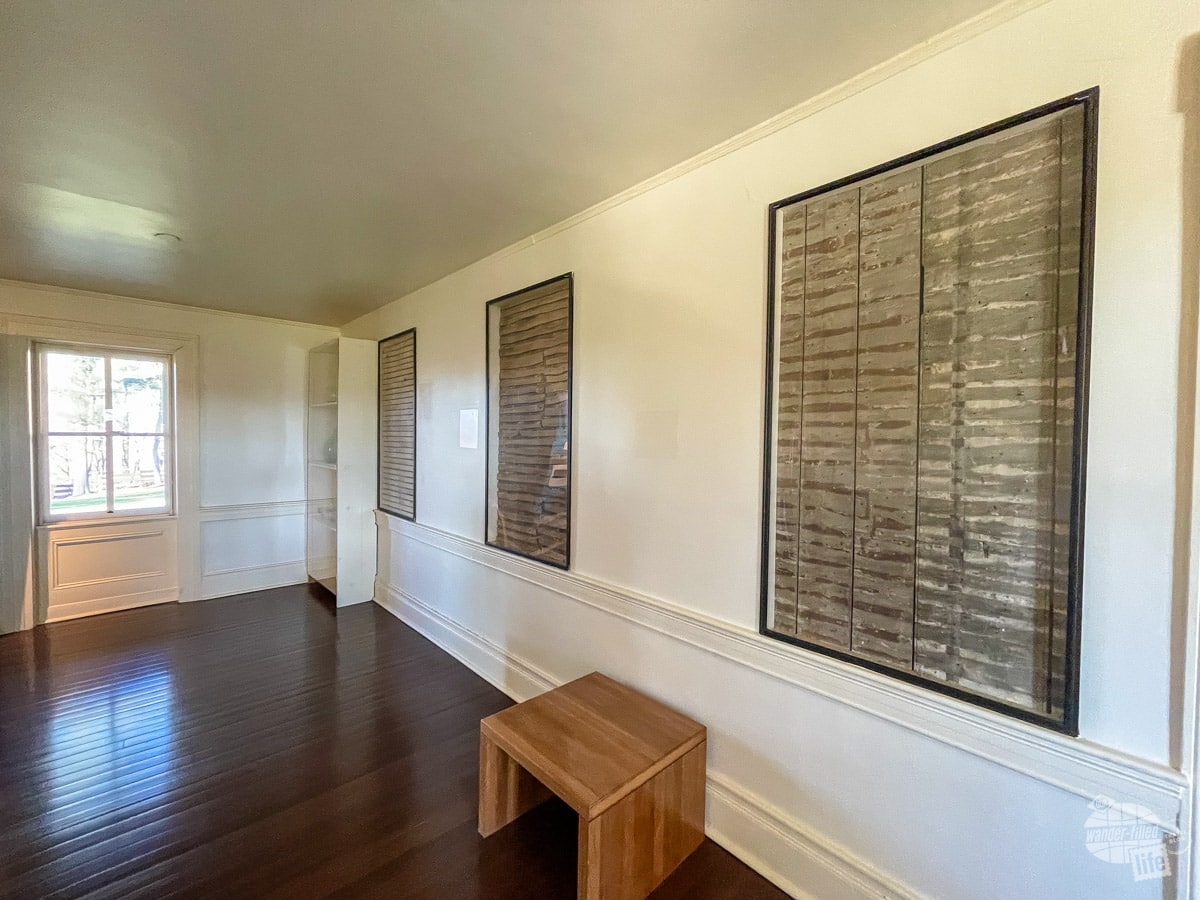
Visiting Friendship Hill National Historic Site
First, if you are visiting in the winter months, like we did, know that the house is only open on the weekends from Oct 1 until April 30. The rest of the year, the house is open every day, as are the grounds.
The house itself is the visitor center and it has an excellent film on the life of Gallatin and his time at Friendship Hill. After that, walk through the house, checking out the exhibits on both Gallatin’s life and the construction of the home, which had many different additions. I particularly enjoyed seeing some of the construction techniques and how they evolved over time in the building of the various parts of the house.
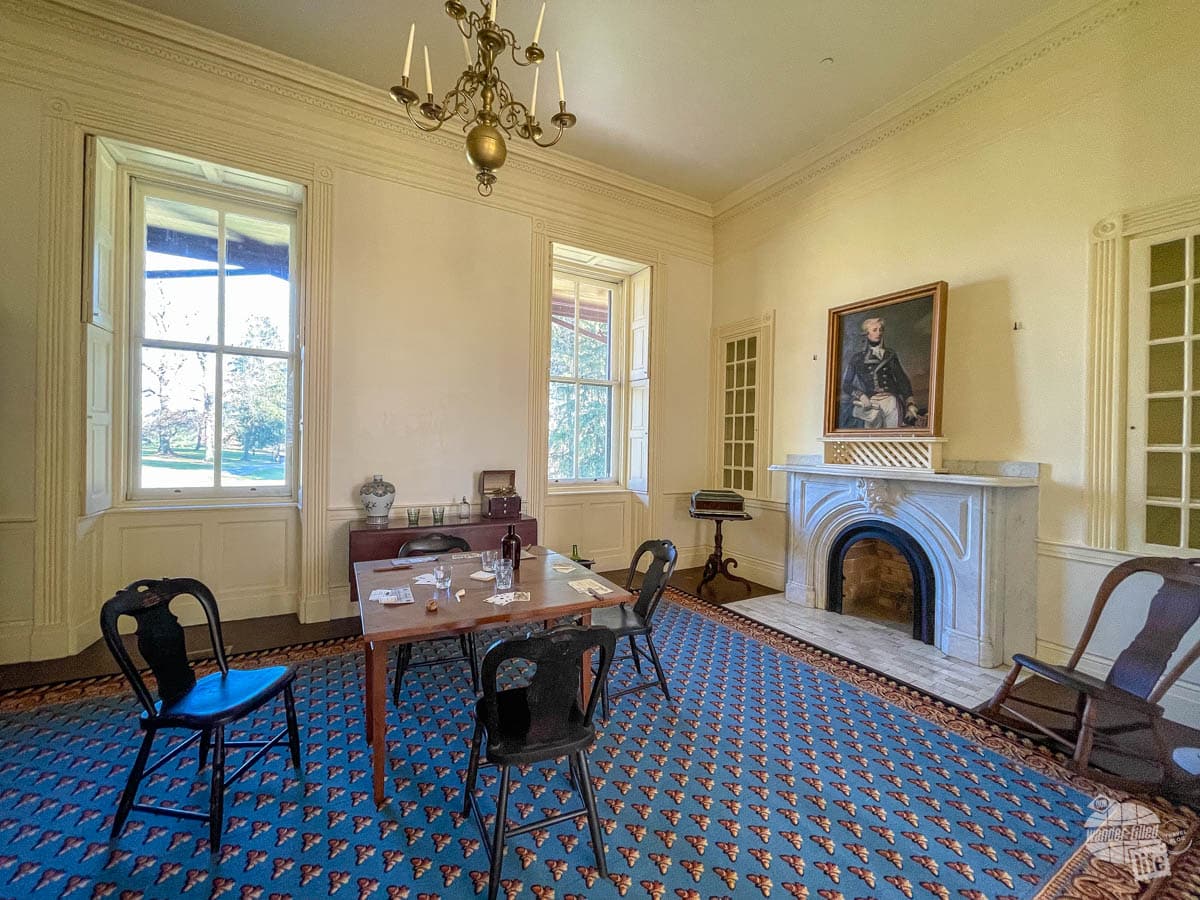
Make a point to walk the grounds, including the overlook of the Monongahela River. There are also 10 miles of hiking trails on the property to enjoy.
All told, we spent about two hours at the house and the grounds. Because it was only open on the weekend, we had to visit the same day we were starting our drive home, so did not get a chance to enjoy the trails.
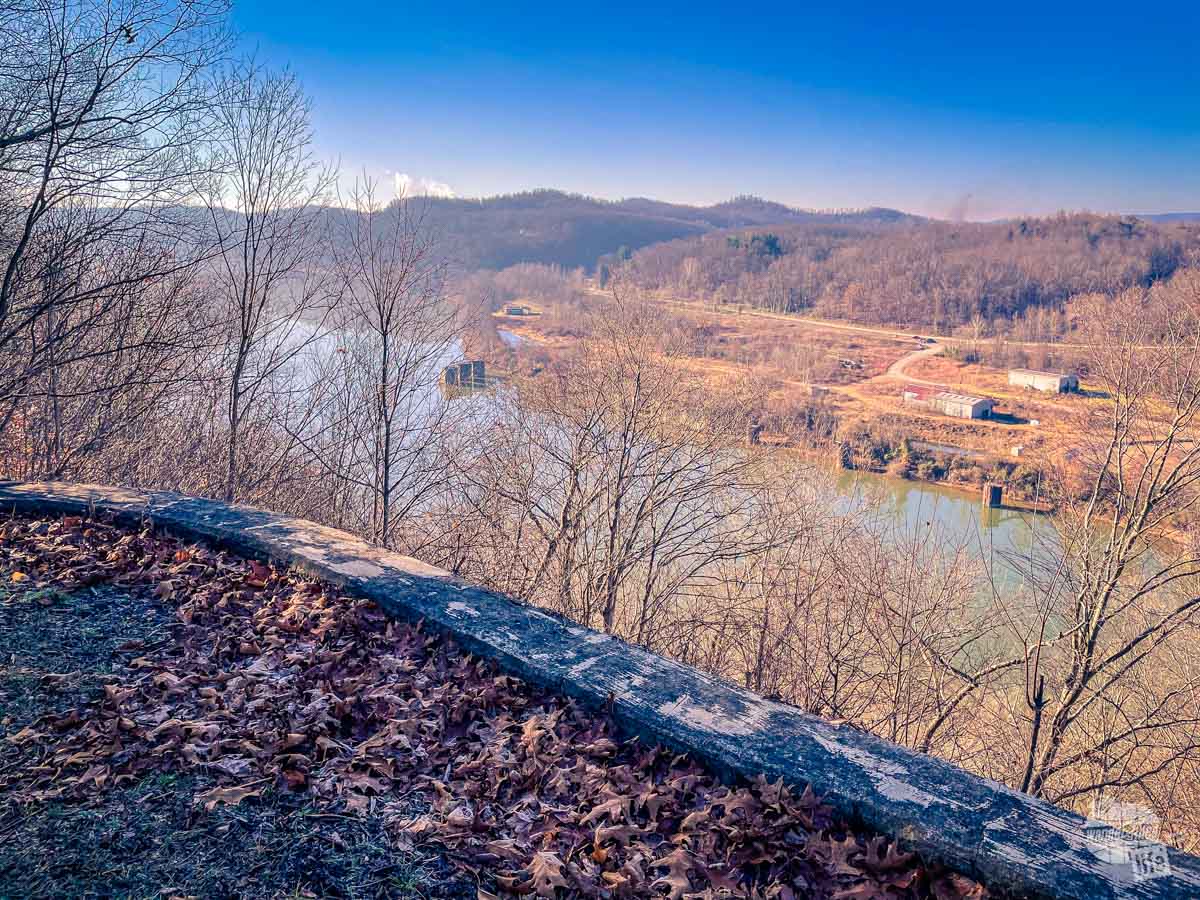
Where to Stay and Eat in Uniontown
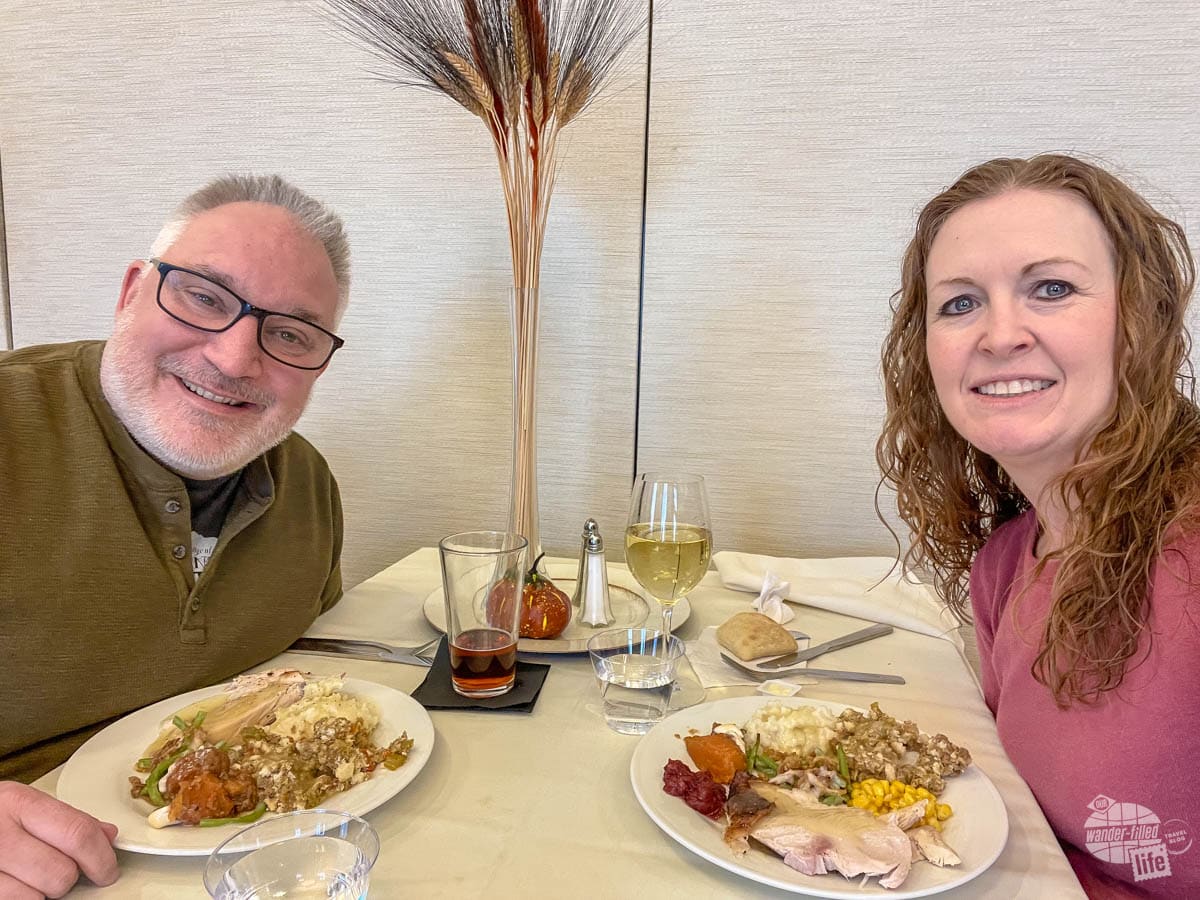
We stayed that the Hilton Garden Inn in Uniontown and it was perfect for our stay. Not only was it quite comfortable for a few days (got an upgrade to a two-room suite!) they also had an EXCELLENT Thanksgiving dinner at the hotel.
Whenever we travel on holidays, like Christmas or Thanksgiving, we know finding an open restaurant can be a bit of a challenge. In this case, we were quite surprised to find the fantastic buffet this hotel put on for Thanksgiving.
Read TripAdvisor Reviews | Book the Hotel
Other than the hotel, we made a point to try out Primanti Brothers, a Pittsburg chain, which had recently opened a Uniontown location. This sandwich and pizza shop had a great selection of hearty meals and make their sandwiches loaded with both fries and slaw.
To be honest, I loved my Joe, Dick & Stanley Tall Boy sandwich, but I made a point to get the slaw on the side and I was glad I did. Bonnie got a really hearty salad and we both commented that if we saw one of these in future travels, we would certainly stop in again.
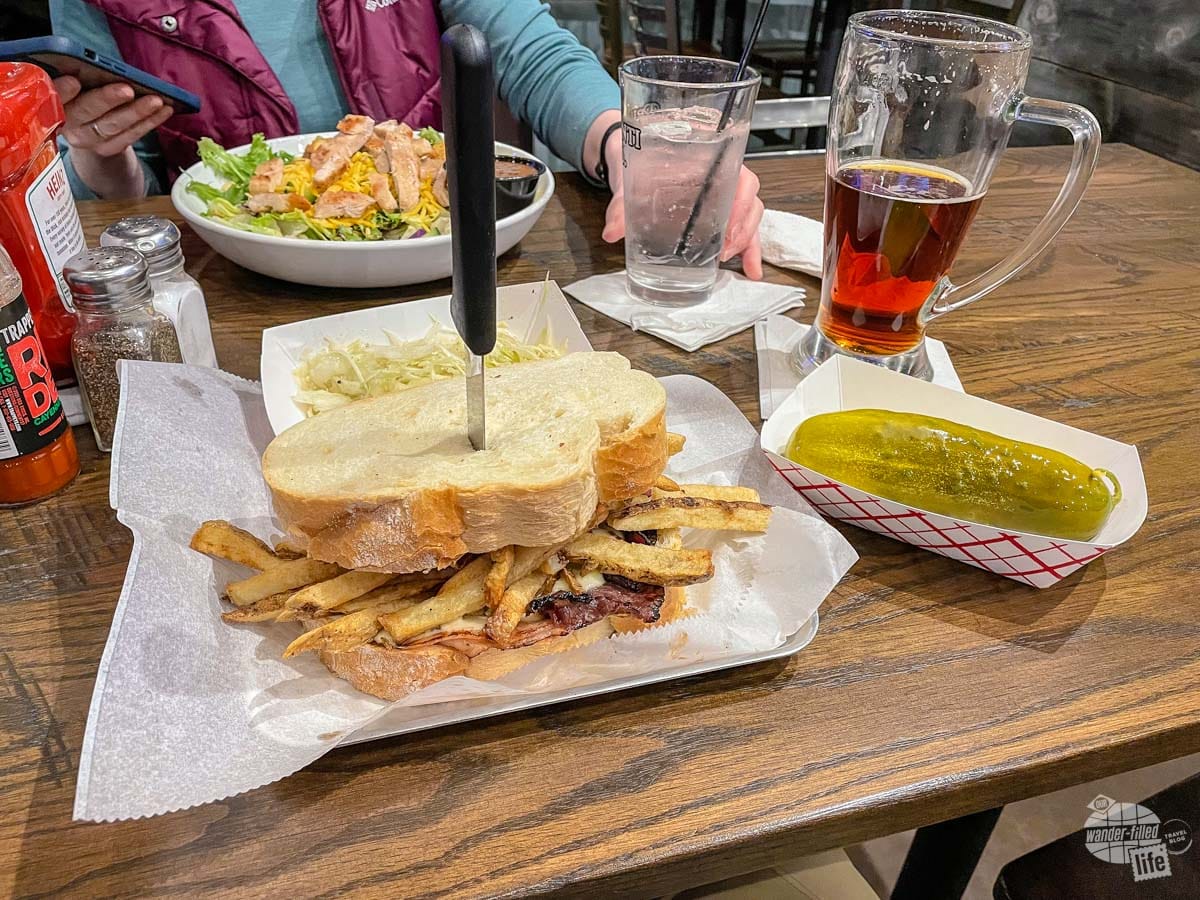
Final Thoughts on the Western Pennsylvania National Parks
The Western Pennsylvania National Parks tell five very different stories of American history. Even though I am a history buff, I learned an awful lot I simply had no idea about.
I think, maybe, I was most amazed by the Allegheny Portage Railroad NHS. The pure audacity and ingenuity needed to create a rail system to take canal boats over a mountain is simply mind-boggling.
I also learned a lot about events I had heard of but never really studied in depth, like the Johnstown Flood and the battle at Fort Necessity.
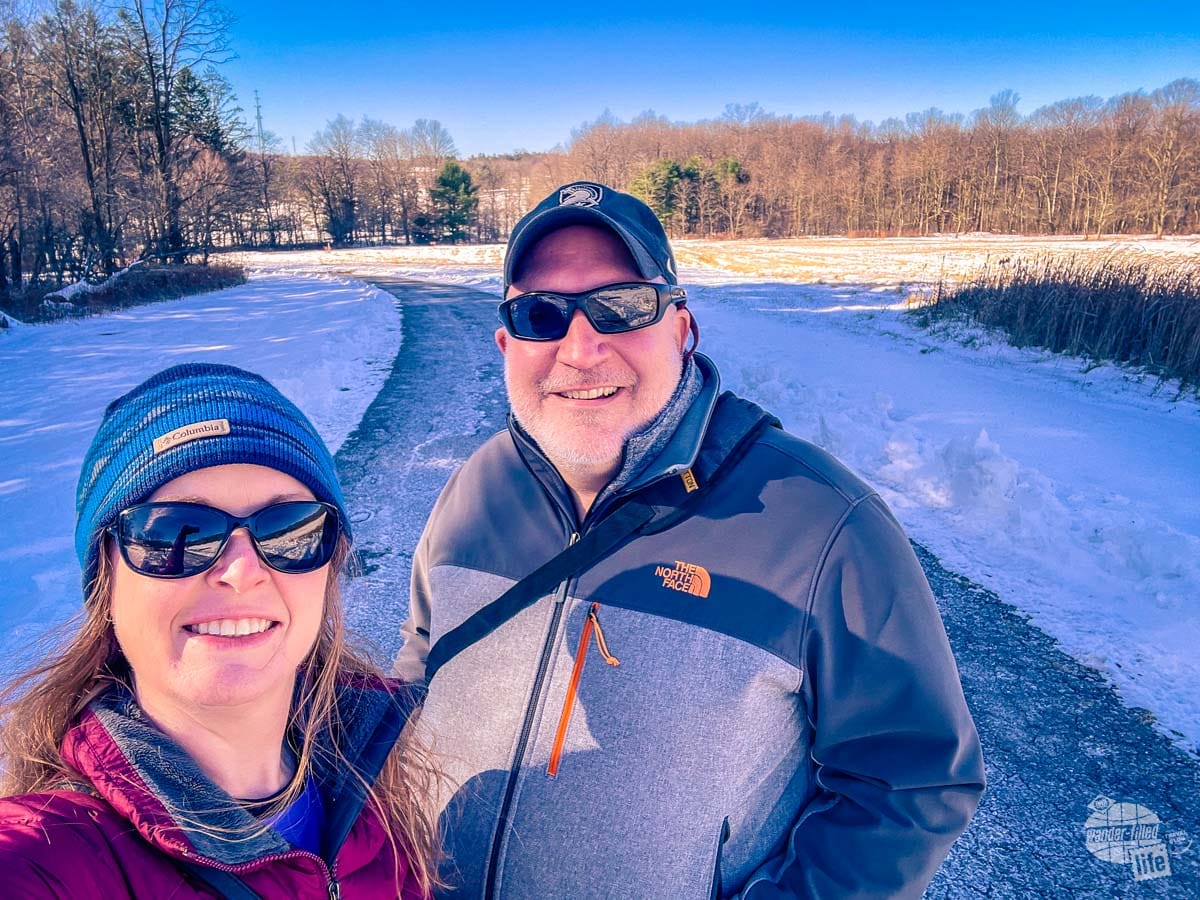
But what I learned most was how pretty this part of Pennsylvania is. The Allegheny Mountains of Western Pennsylvania really stole the show and made this an area we are looking forward to seeing again, especially in the early fall when the leaves are changing colors.
In short, we had a blast spending our Thanksgiving Break exploring the Western Pennsylvania National Parks. It was an excellent trip and we would certainly return to the area to explore even more.
Travel Resources
What do you use to find a flight?
We use Skyscanner to find deals on flights. Skyscanner has a great interface and compares tons of airlines for the best pricing and routing. That said, it does not always have every airline and some airlines will have better deals on their website. Still, Skyscanner is a great place to start.
Click here to search for a flight.
What do you use to find a hotel?
We typically stay at Hilton properties, so we use the Hilton website. You can find good Hilton Honors discounts or AAA discounts for a hotel there. We make great use of our free night certificates from our Hilton Honors American Express.
Click here to book a Hilton property.
If there are no Hilton properties available, we use TripAdvisor to read reviews and book the hotel. We find we can get the best price that way.
Click here to search for a hotel.
We recently partnered with Stay22 to add interactive maps to each of our destination posts. This will allow you to see a plethora of hotels and vacation rentals all in one responsive map of the area.
What if I need more space than I can get at a hotel?
We use Vrbo for the times when we have rented a cabin for a weekend getaway, like this cabin in Townsend, TN, or needed to rent a house for a large family vacation. We had a great experience with them in terms of refunding deposits when COVID hit and will continue to use them.
Click here to search for a vacation rental.
Who do you use for rental cars?
As a general rule, we book with Hertz for rental cars. We have had nothing but good experiences with them. Plus, we really like unlimited mileage and not worrying about crossing state lines. We have even rented from Hertz overseas in both Slovenia and Croatia.
Click here to book a rental car.
How about booking a cruise?
We have found some amazing prices for booking a cruise through Cruise Direct. We have saved a lot of money on our cruises compared to what we found elsewhere, making a last-minute Bahamas cruise even cheaper.
Click here to book a cruise.
What if I want to rent an RV?
We highly recommend Outdoorsy for RV rentals. We rented a camper van for a week to visit Rocky Mountain National Park for the elk rut and Custer State Park for the Buffalo Round-Up and had a blast. The program was easy to use and we really enjoyed the freedom of having a camper van for that trip.
Click here to rent an RV.
What do you use for booking tours?
We don’t often book tours. Typically, we like to do stuff on our own. That said, there are some experiences you can’t have any other way. So, when we do want to book a tour, we always check Viator first.
Click here to book a tour.
Do you use anything to get discounts on the road?
We make extensive use of both Good Sam and AAA on the road. Good Sam is normally regarded as a discount card for RVers at campgrounds and Camping World but anyone can use the 5 cents off a gallon at the pump at both Pilot and Flying J.
Click here to get a Good Sam membership.
We have had AAA as long as we have been married and it has more than paid for itself in discounts at hotels, aside from the peace of mind of having roadside assistance. Add in paper maps and the ability to get an international driver’s license and it is more than worth it for any traveler out there.
Click here to get a AAA membership.
